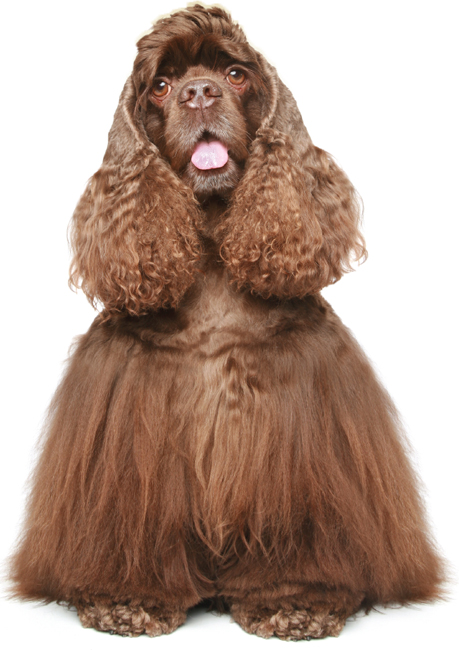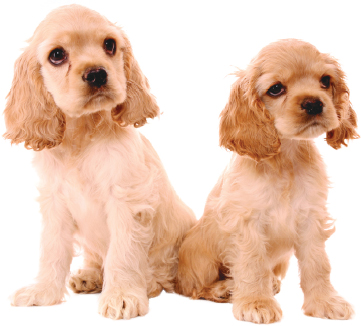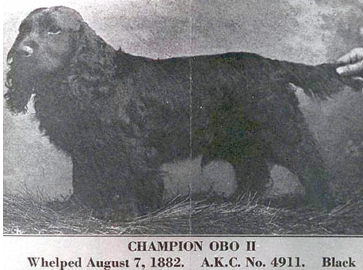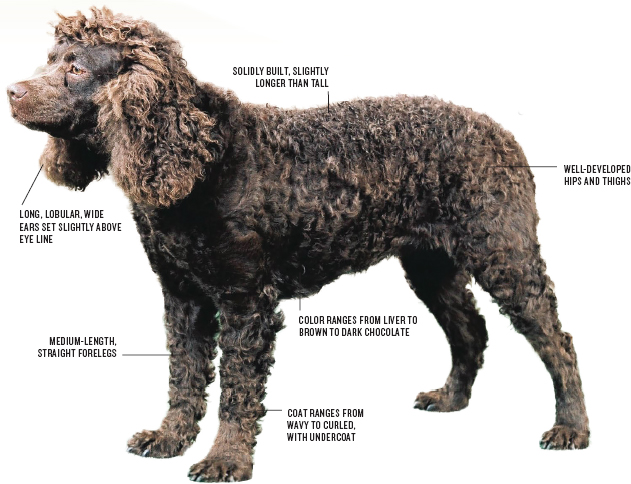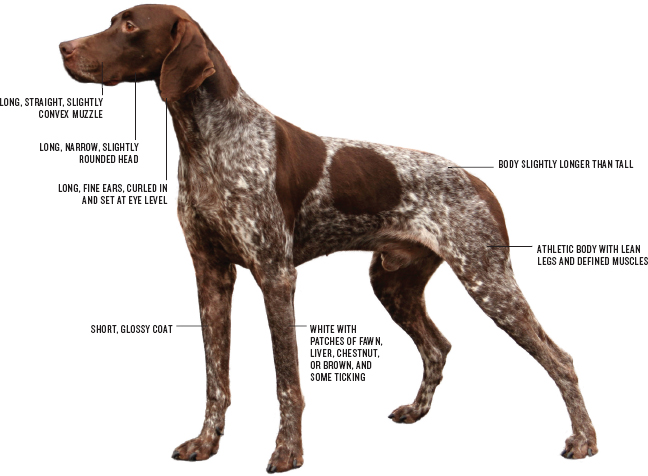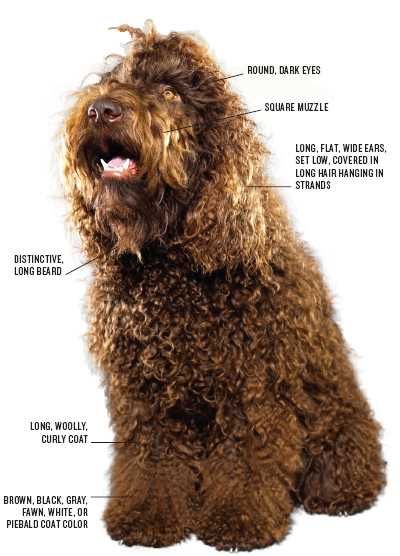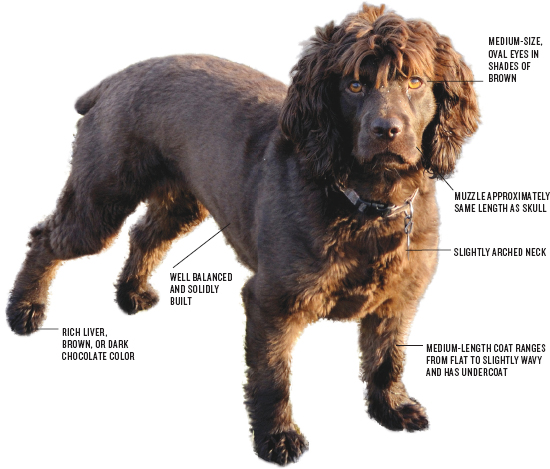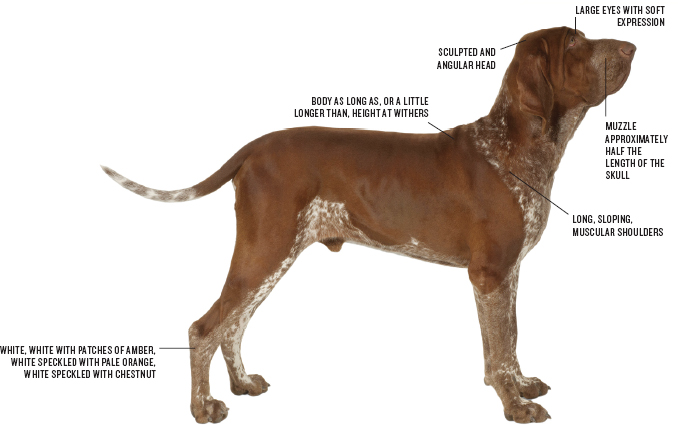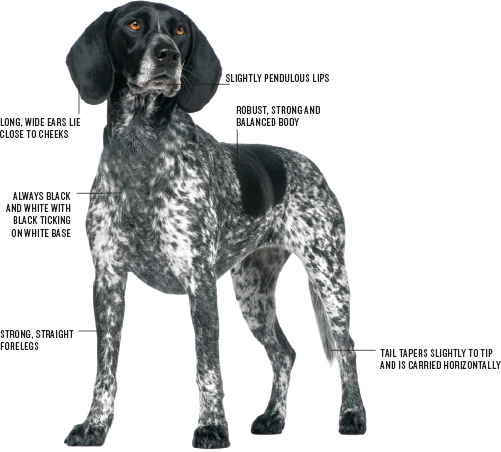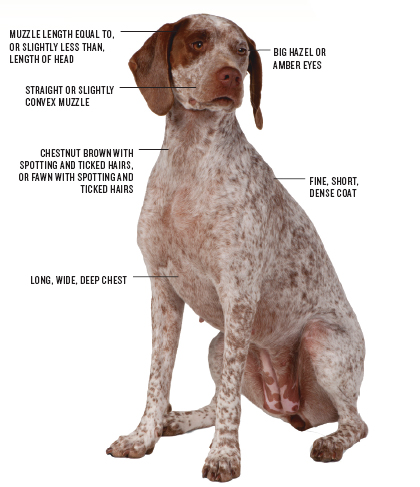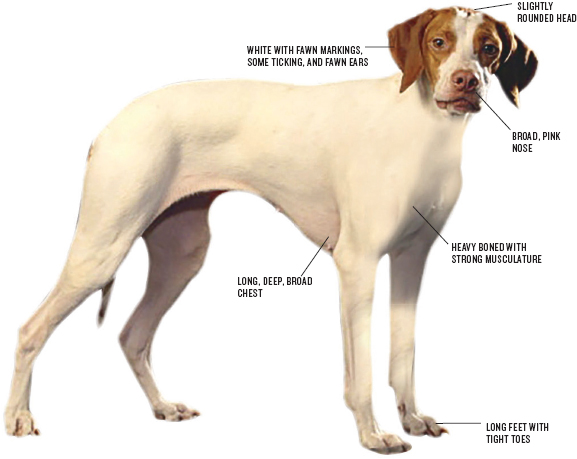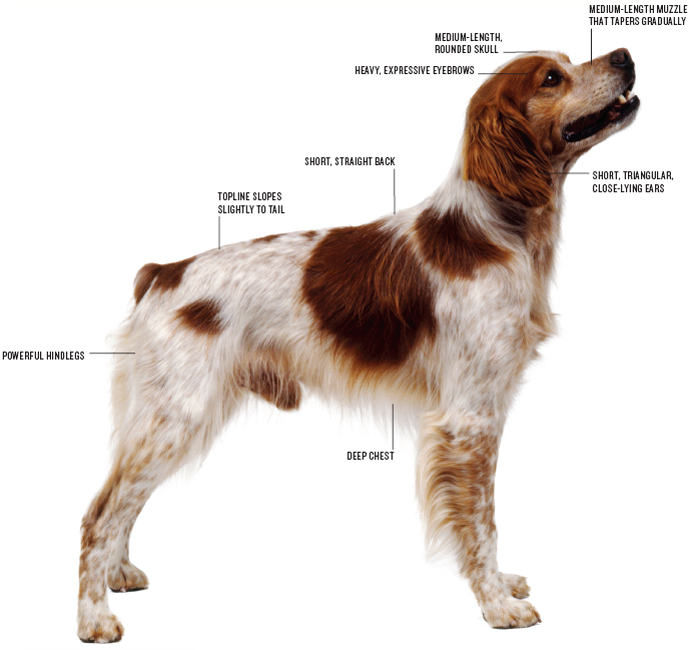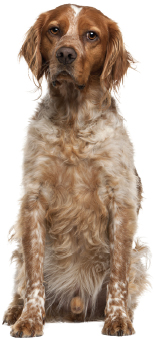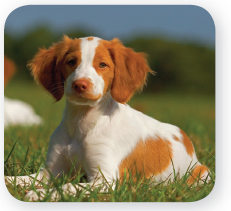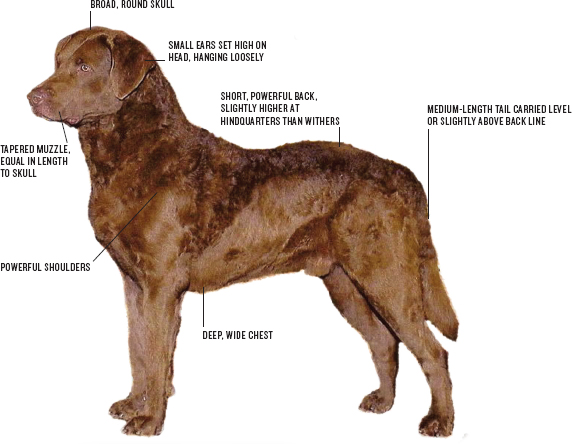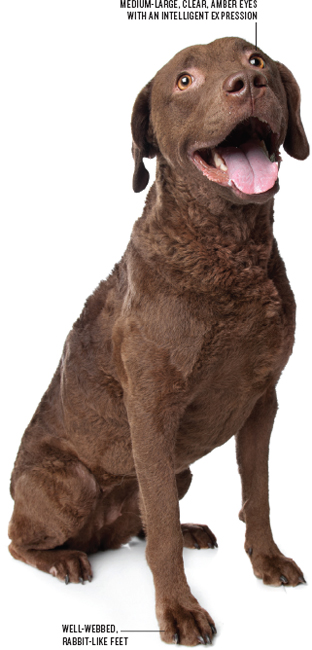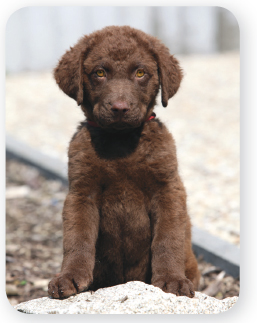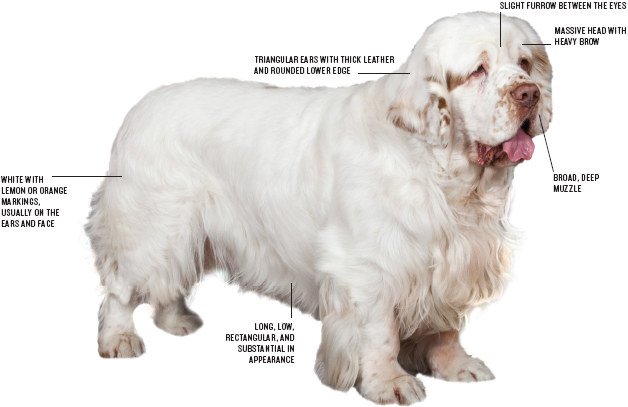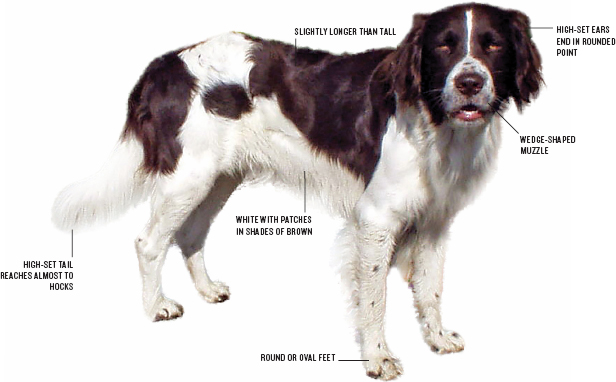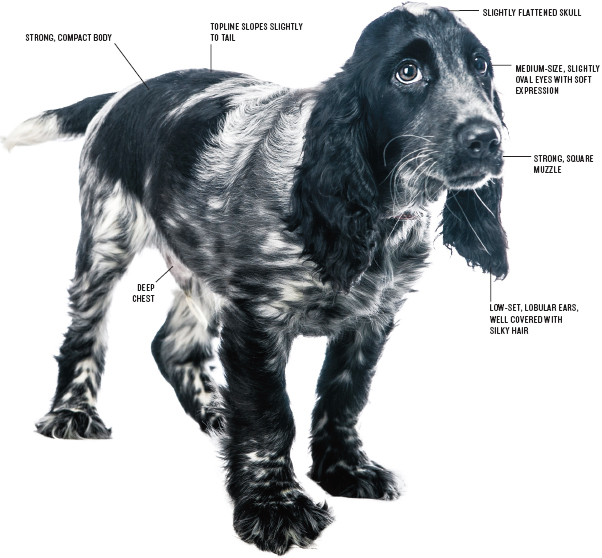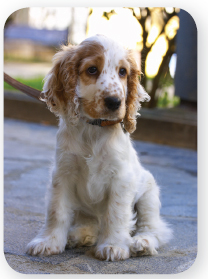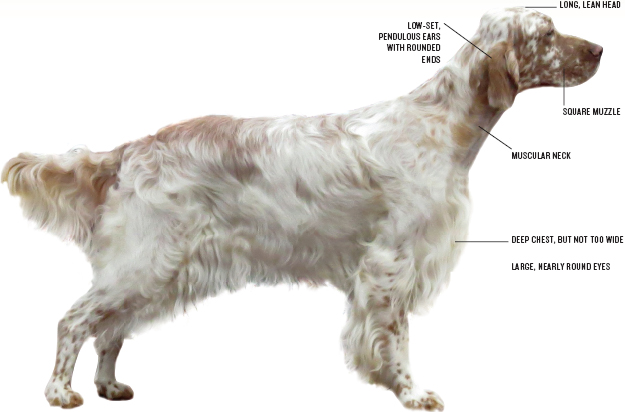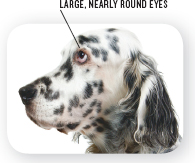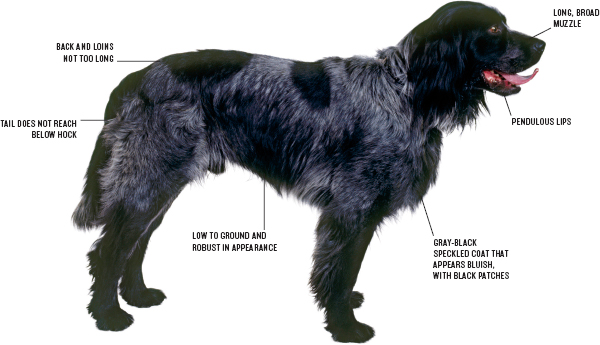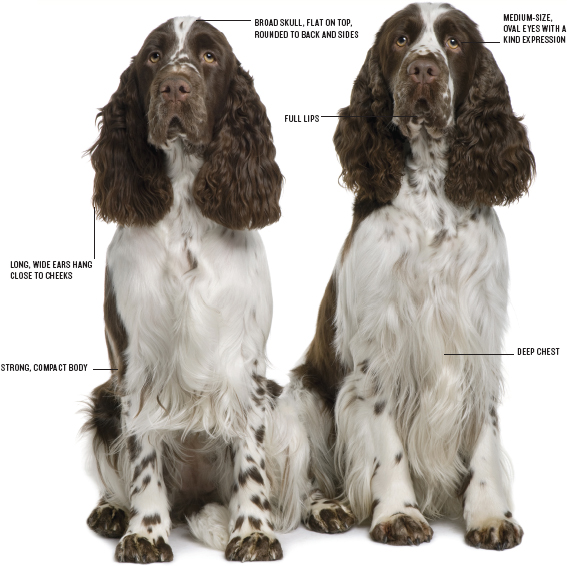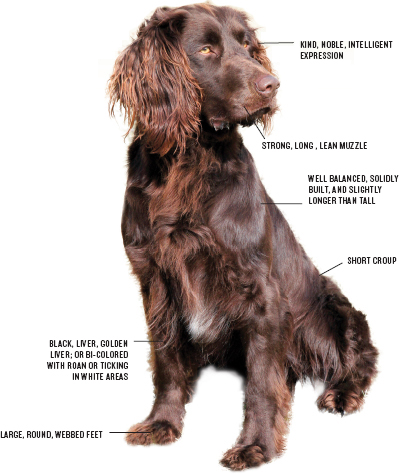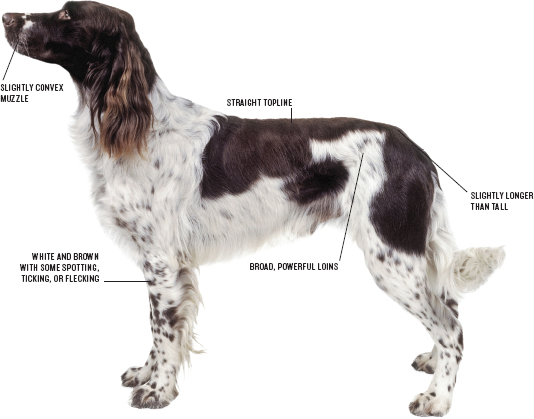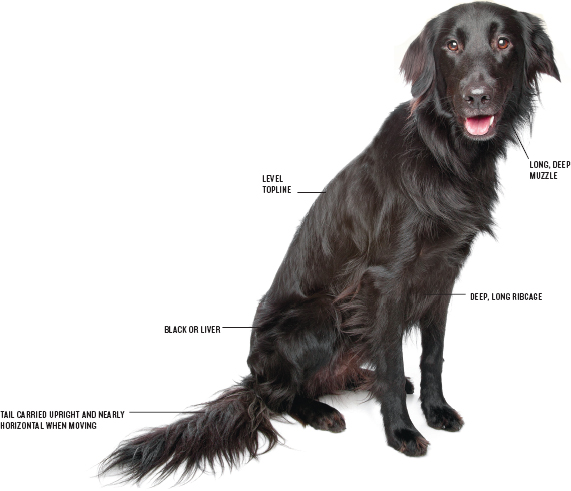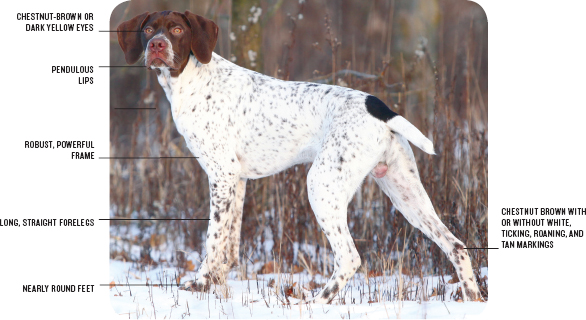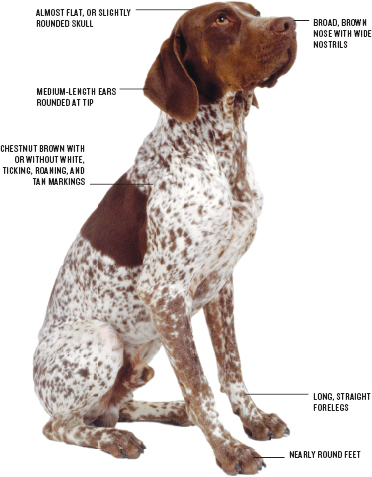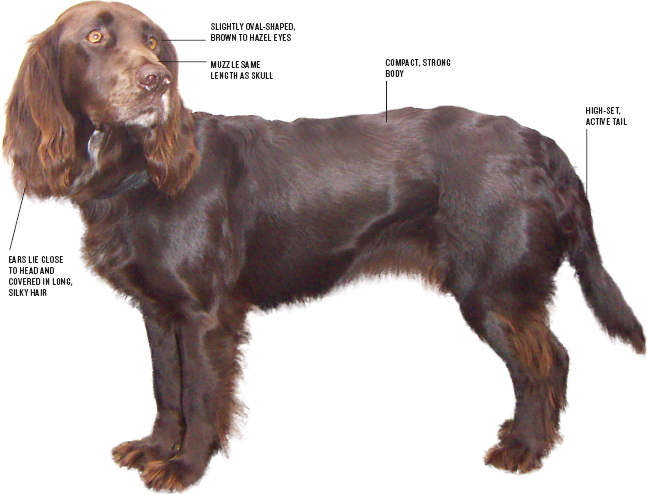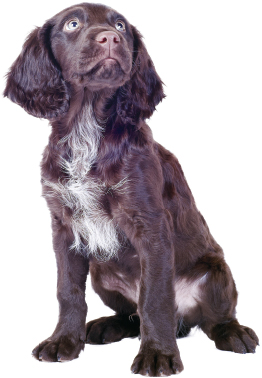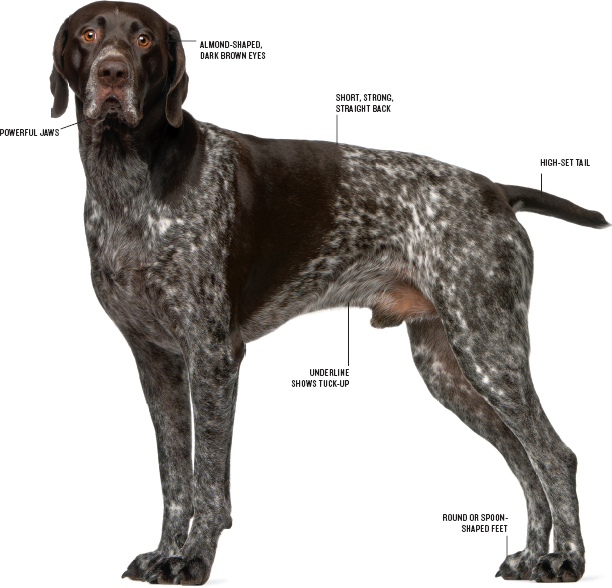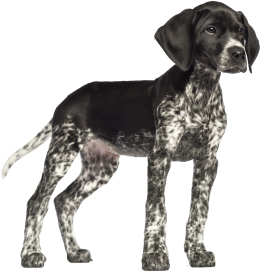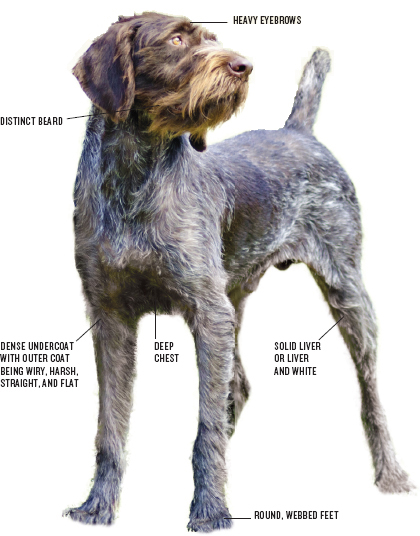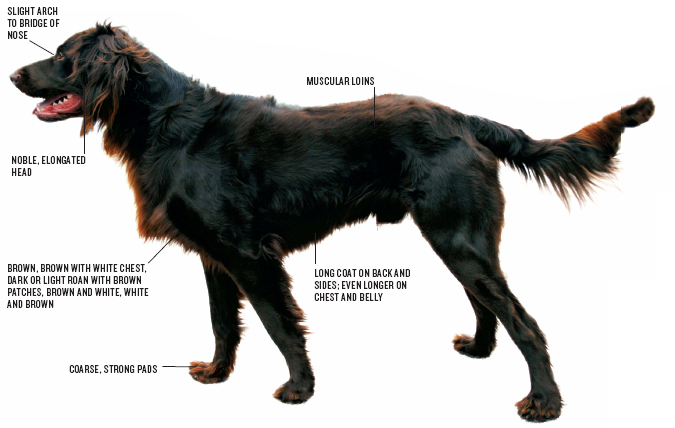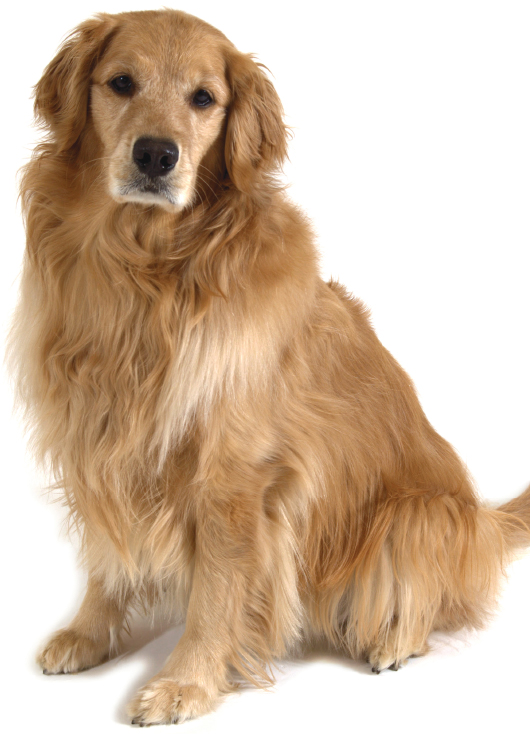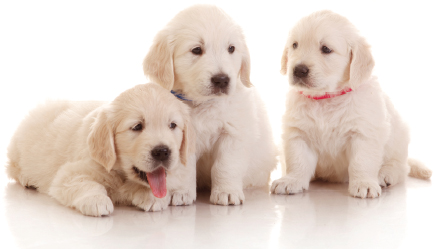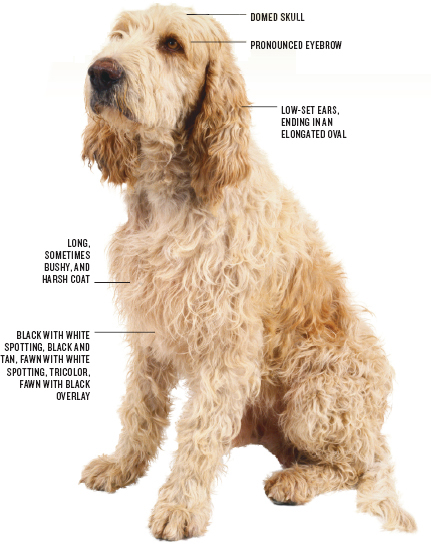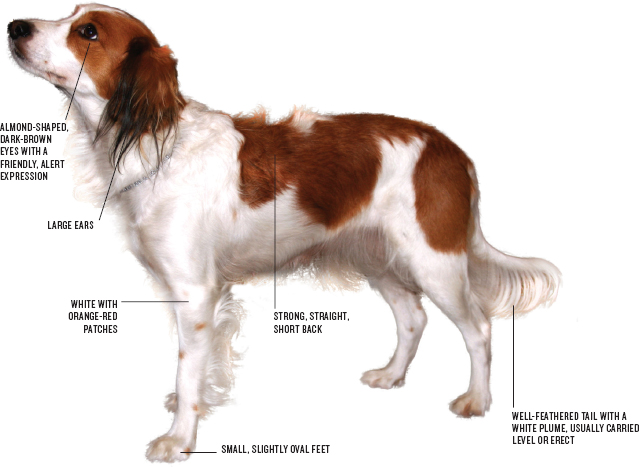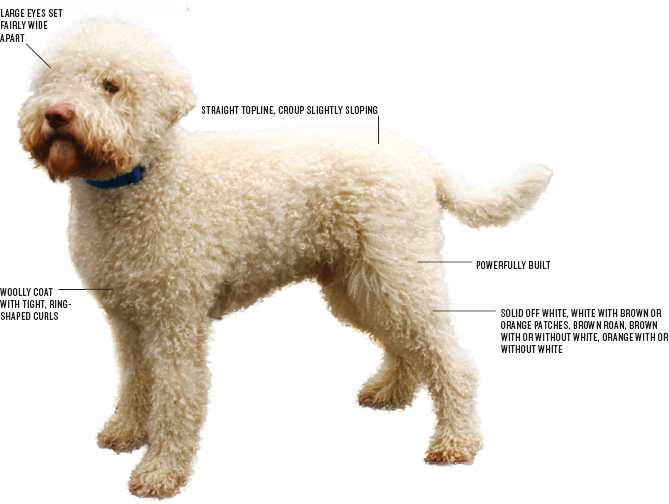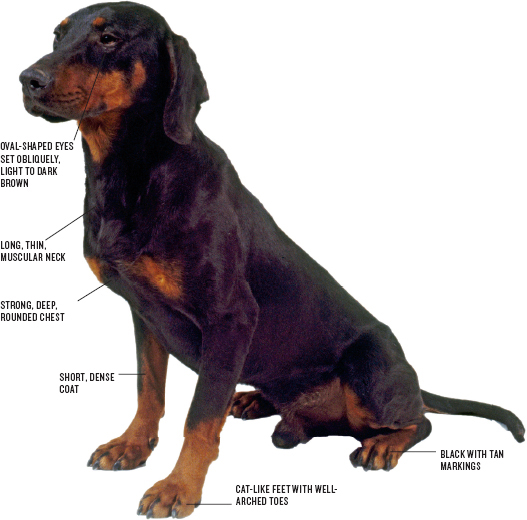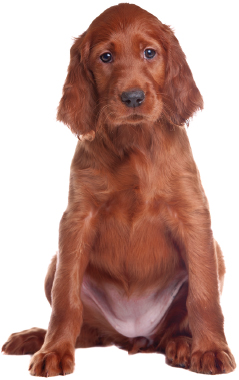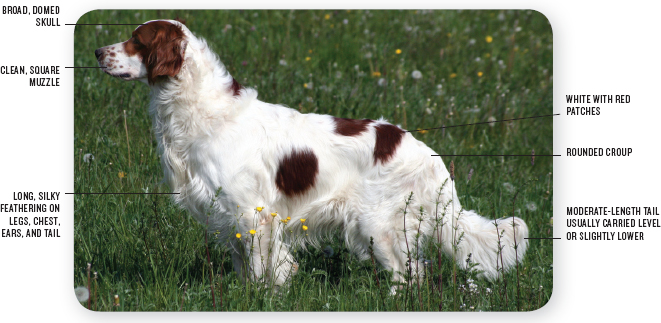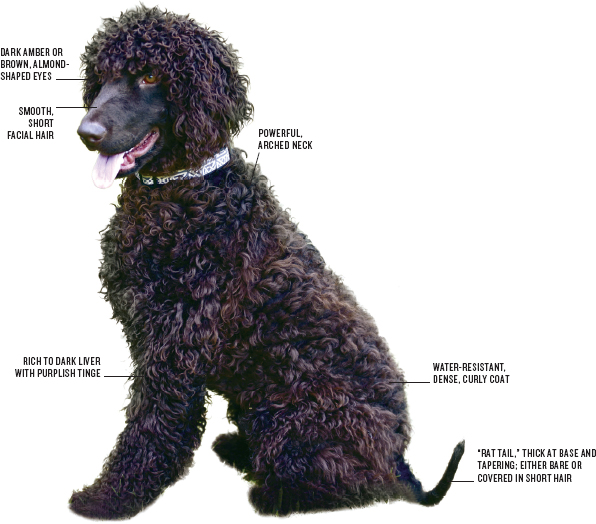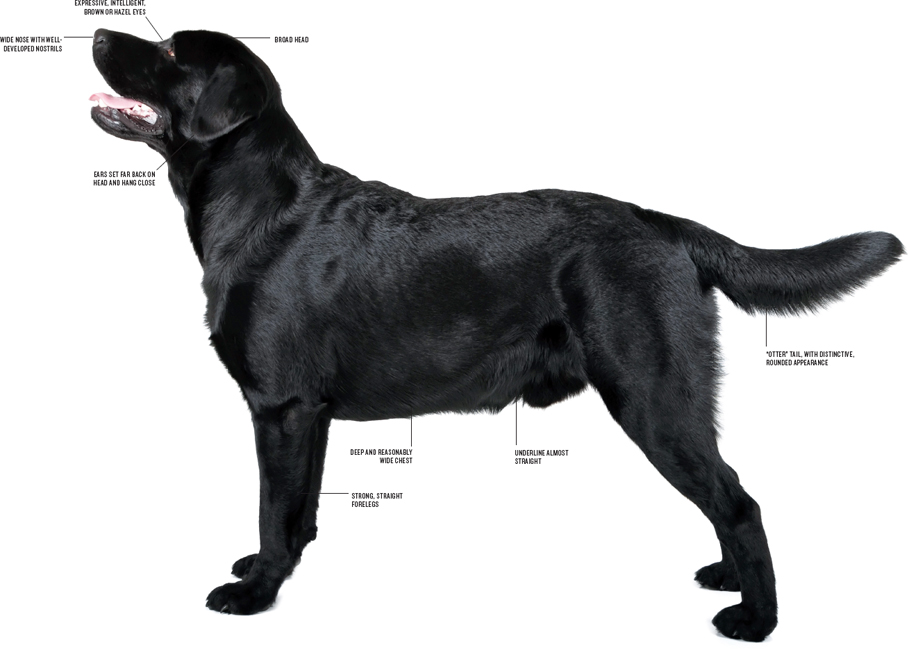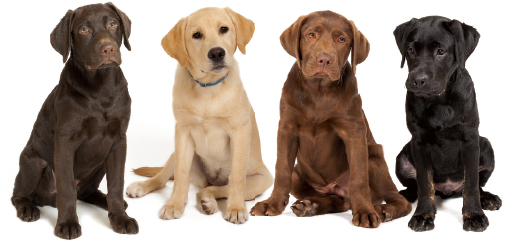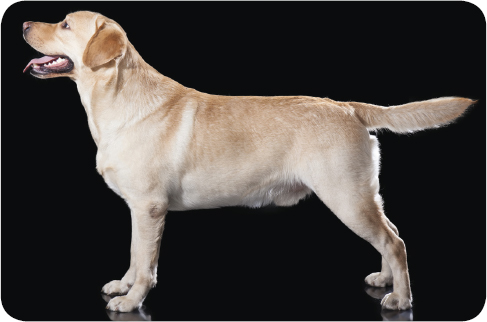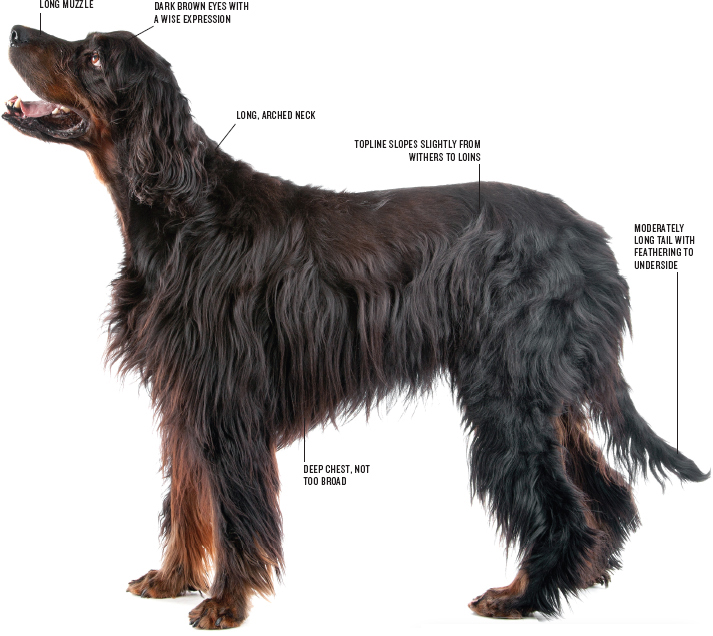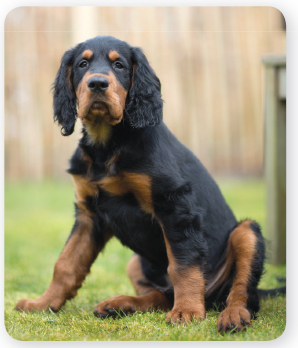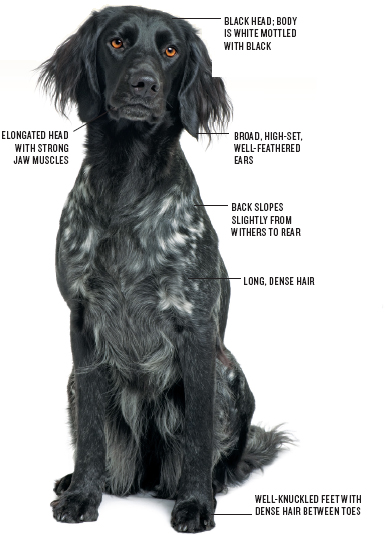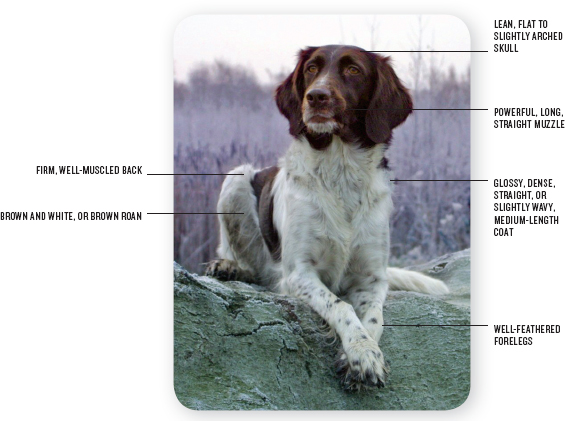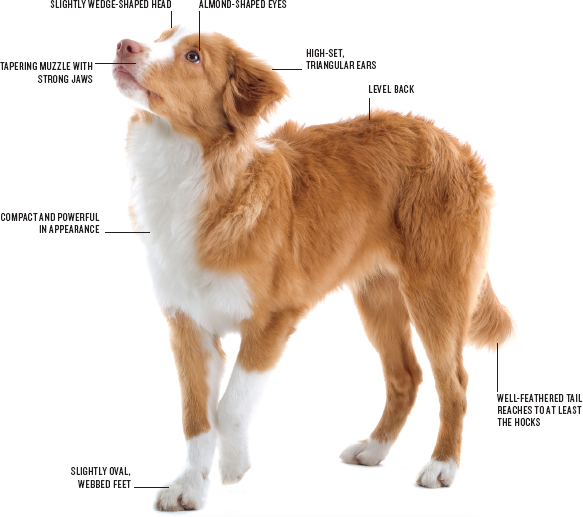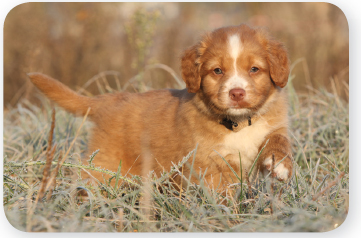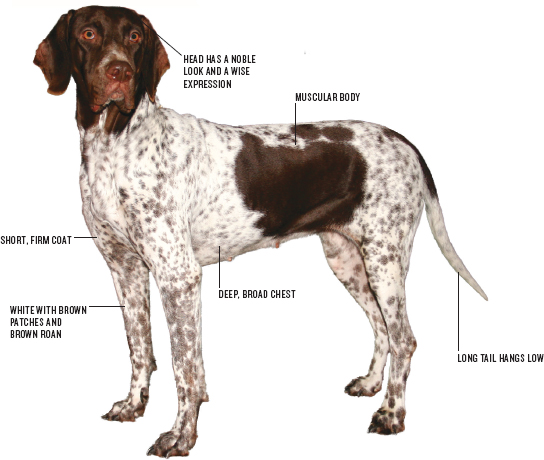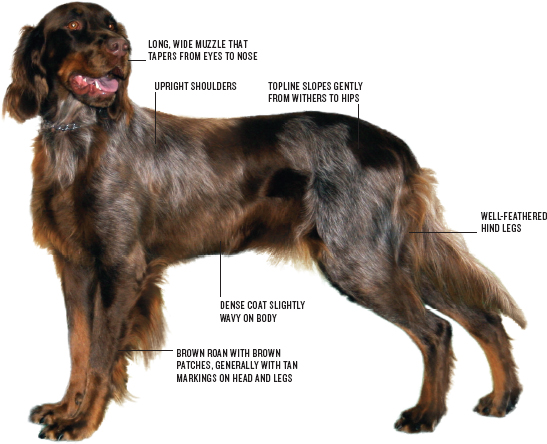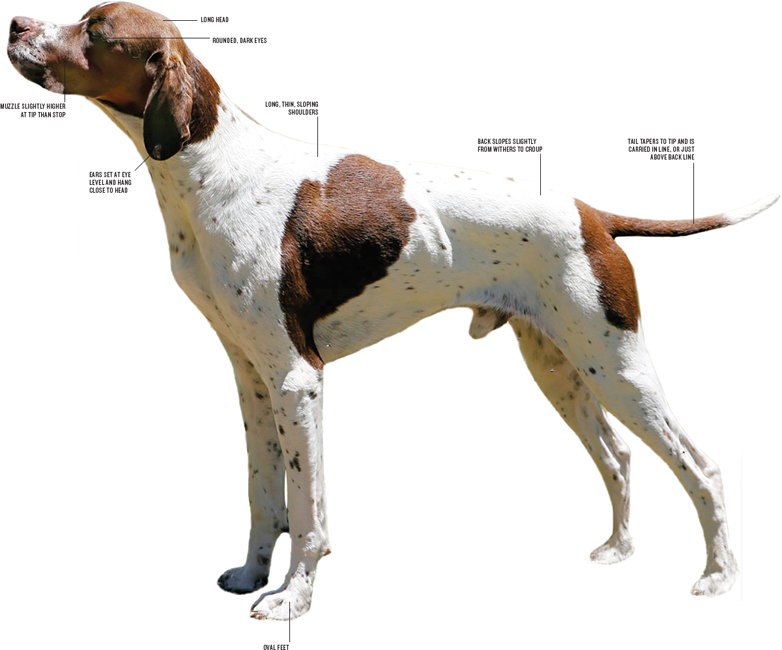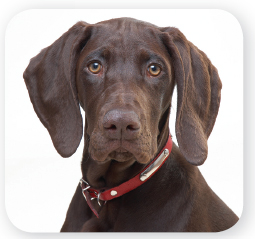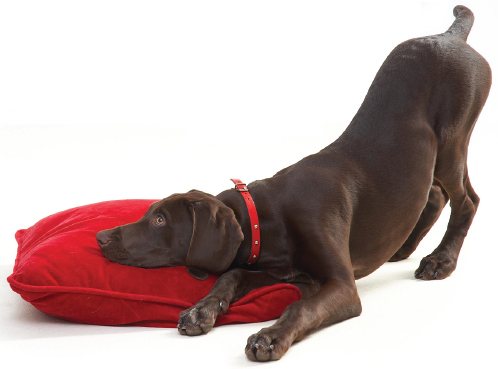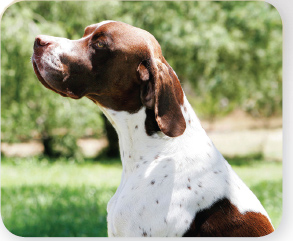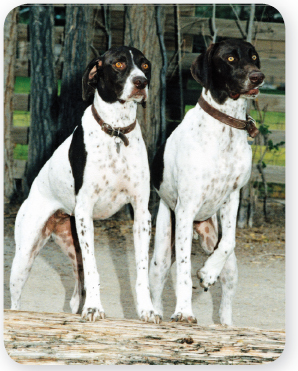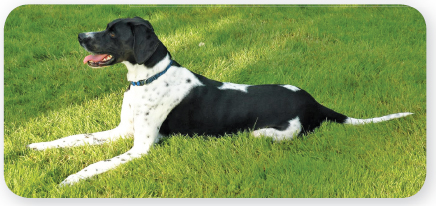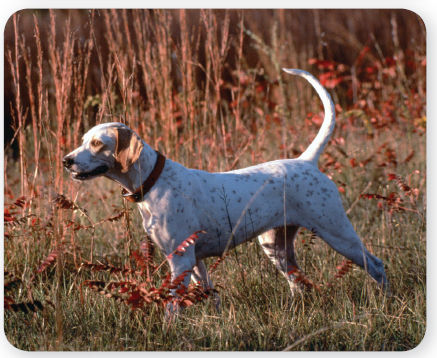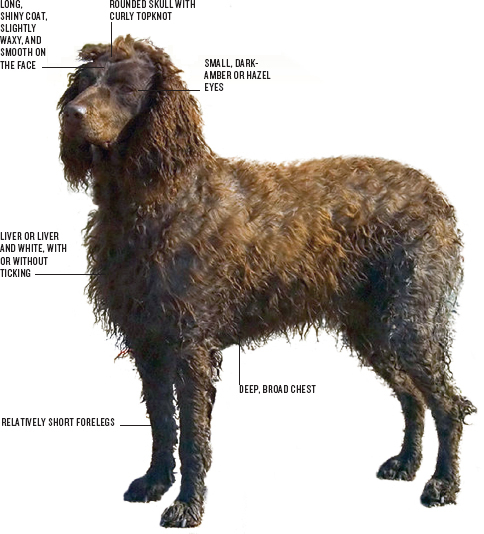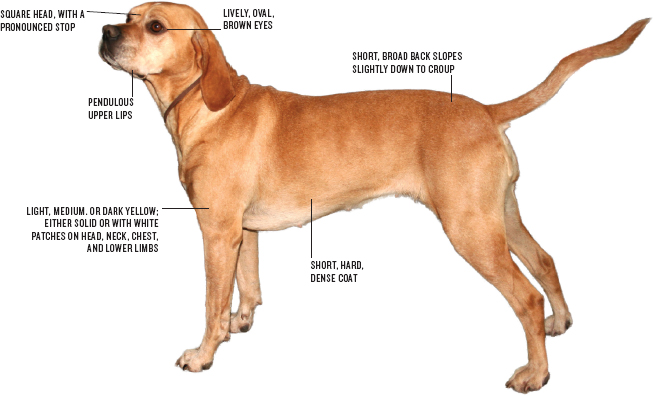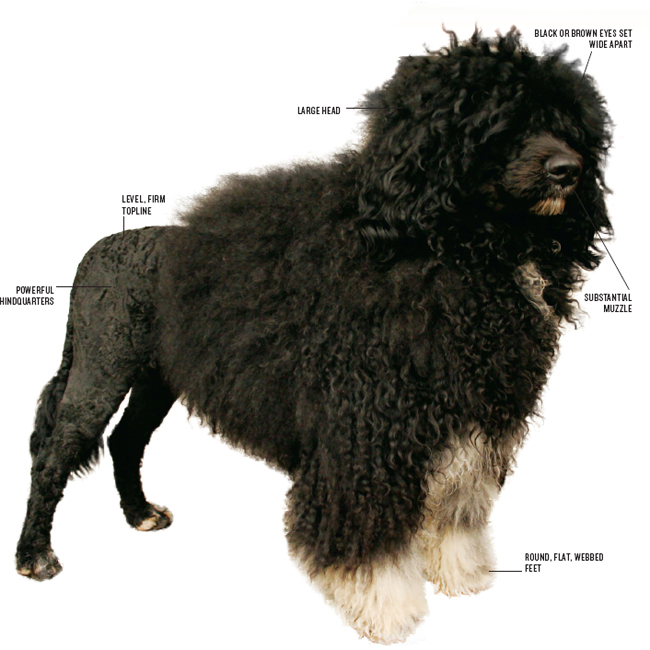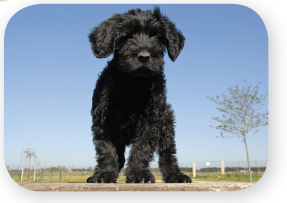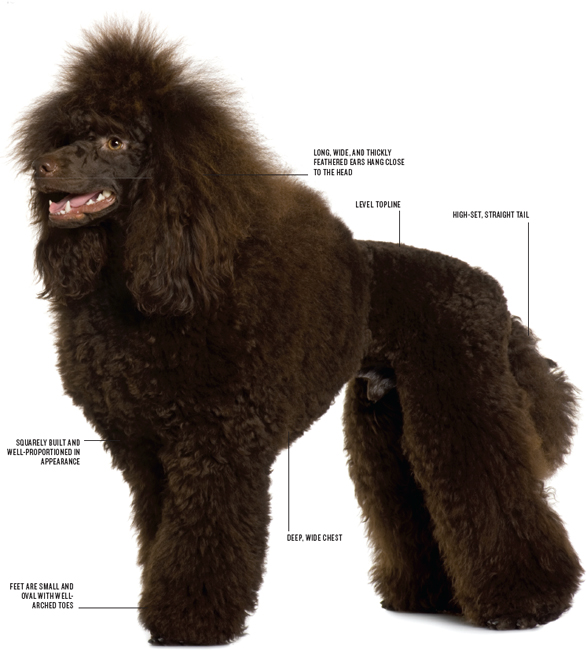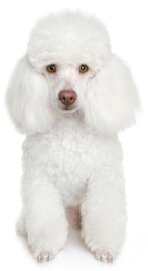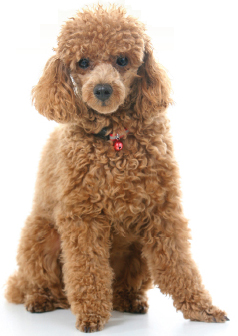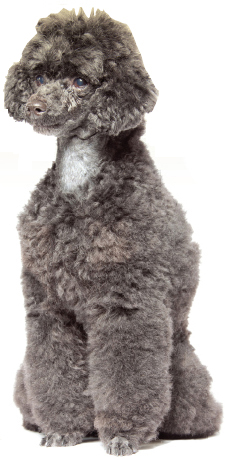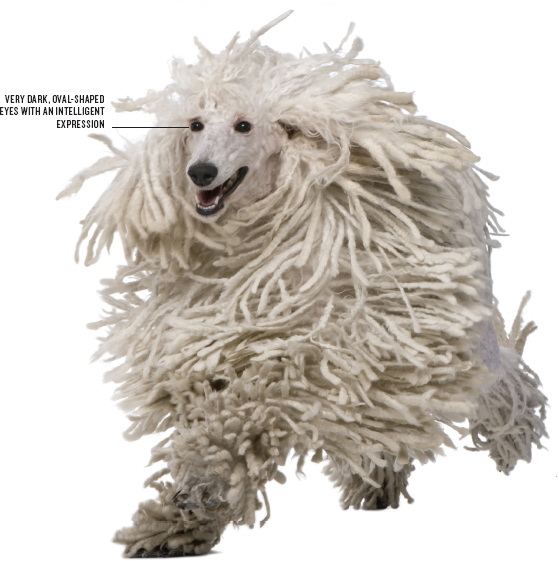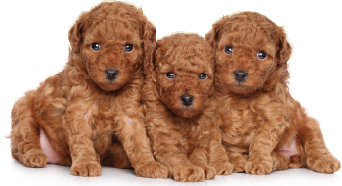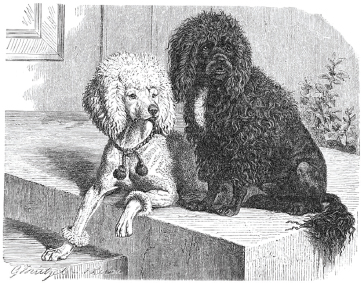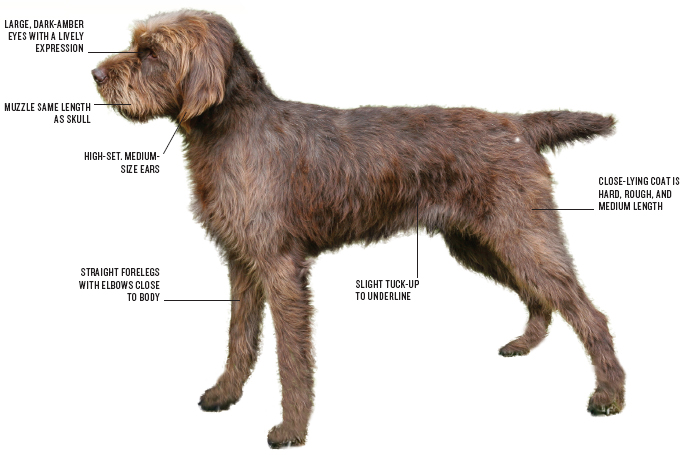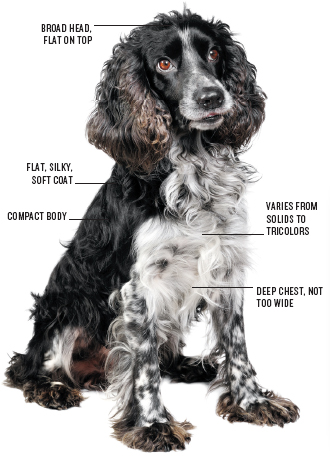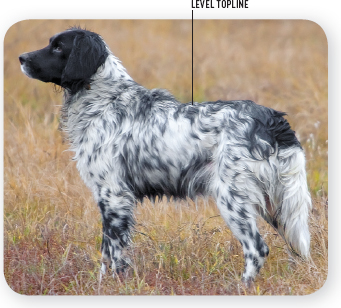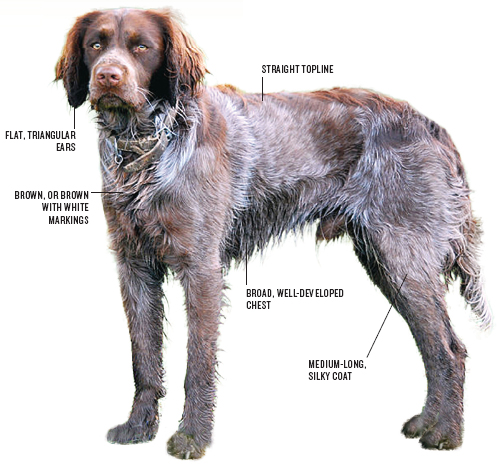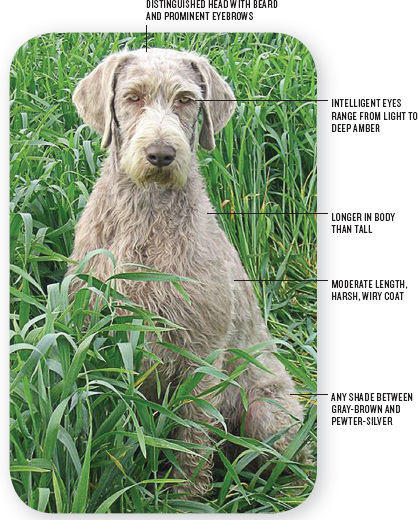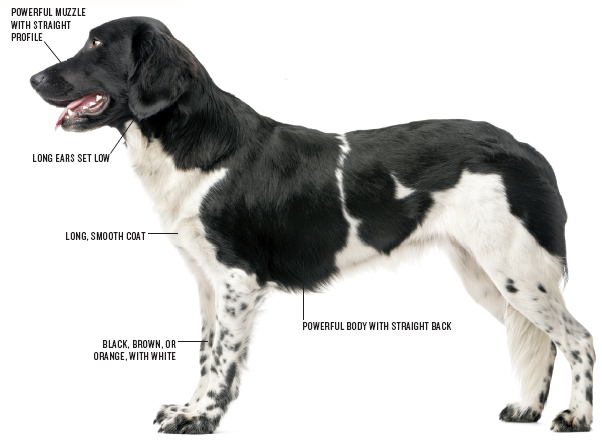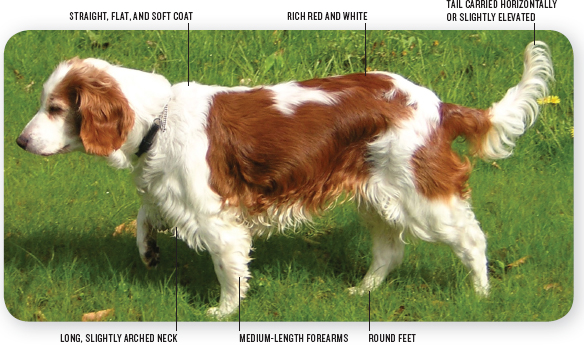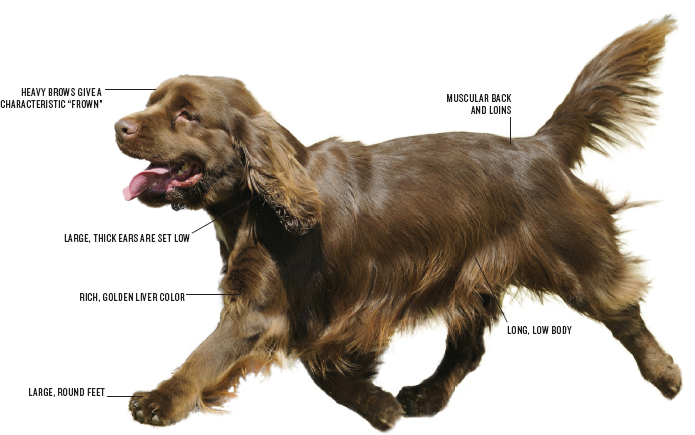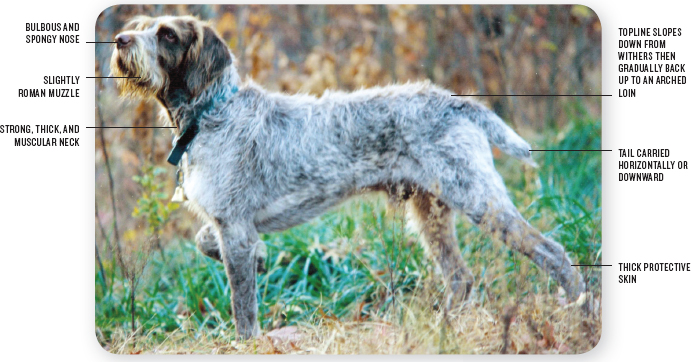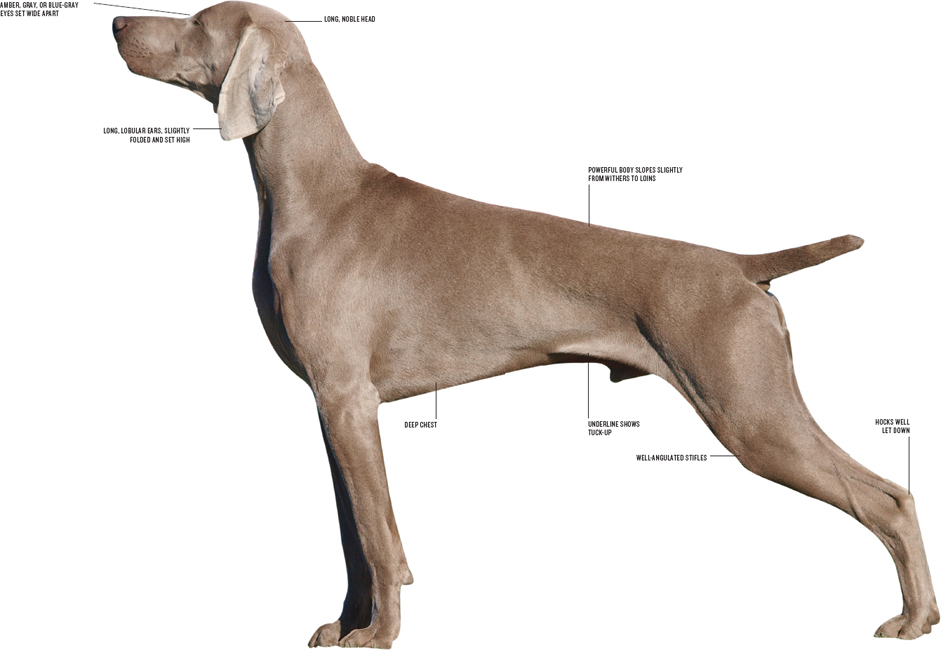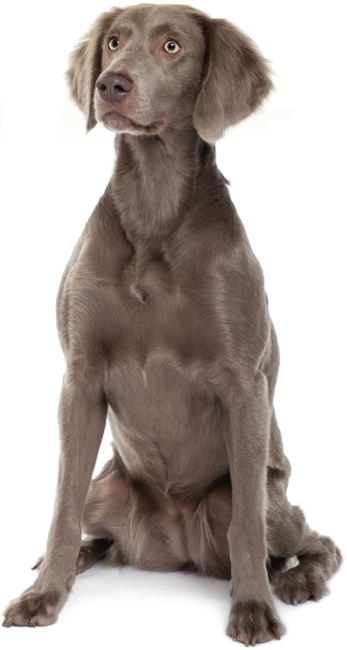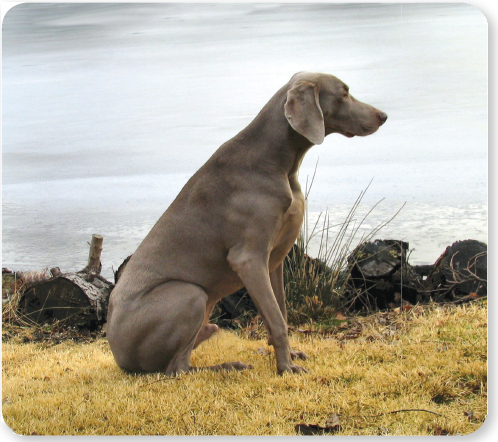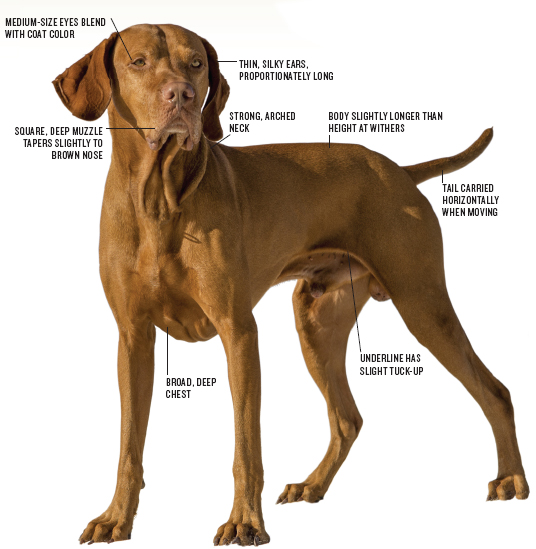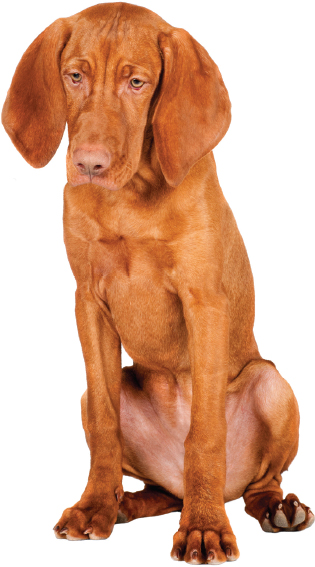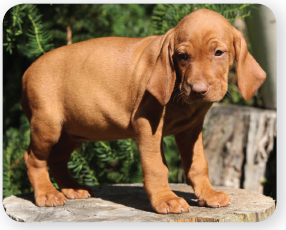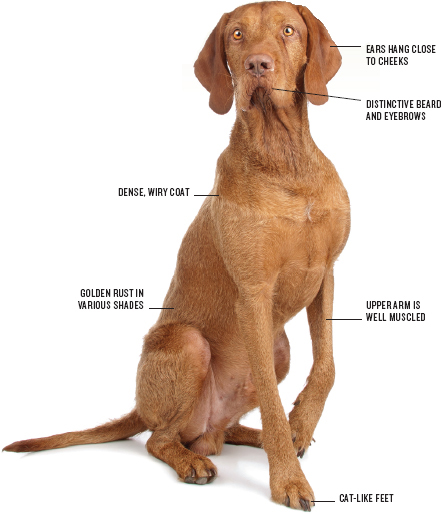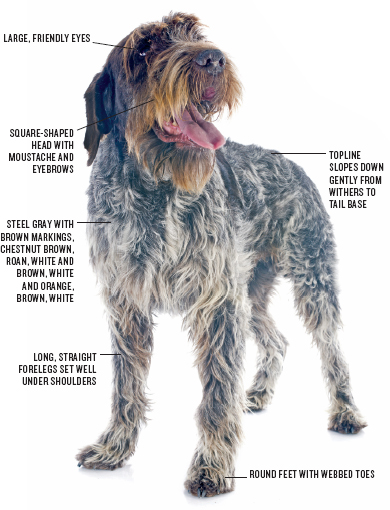SPORTING DOGS
COCKER SPANIEL : UNITED STATES
AT A GLANCE
Size: small
Exercise needed:

Grooming needed:

Aptitudes: flushing, retrieving, agility, companion
Height: 14–15 in.
Weight: 26–33 lb.
Average life expectancy: 12–15 yrs
AKC: sporting
CHARACTER
Affection

Playfulness

Friendliness to dogs

Friendliness to strangers

Ease of training

 HEALTH
HEALTH 
Hereditary problems can include cataracts, progressive retinal atrophy, canine epilepsy, luxating patellars, and hip dyslasia
COMMON COAT COLORS
Any solid color, including black, cream, and brown. Any of these colors may appear on a white base as a parti-color, ticked, or roan.
COAT CLOSE-UP
The medium-length, silky coat is shorter on the head. It can be flat or slightly wavy, with an undercoat.
The Cocker Spaniel, or American Cocker Spaniel as they are also known, is the smallest of the sporting dogs and a truly compact athlete. These are working dogs, but they are also extremely popular as family pets and excel in this capacity. Cockers are generally friendly, cheerful, and lively companions that require vigorous daily exercise.
The American Cocker is one of the most popular breeds in the United States and is divided into three color varieties: black, ASCOB (any solid color other than black), and parti-color. Cockers bred for the show ring tend to have longer, fuller coats and can be slightly heavier in frame
HISTORY
The spaniel family is large and very old. The first spaniel arrived in the United States on board the Mayflower in 1620. Historically these active dogs were divided into land and water spaniels, and in the nineteenth century, they were categorized as the breeds we recognize today. Given their small size, Cocker Spaniels were first used for flushing woodcock, hence their name, and later for flushing and retrieving. Today, they are also popular field trial dogs. Although the breed originated in England, by the twentieth century distinct differences could be seen between the English-bred and American-bred cockers. Today, they are recognized as different breeds.
AMERICAN WATER SPANIEL : UNITED STATES
AT A GLANCE
Size: medium-small
Exercise needed:

Grooming needed:

Aptitudes: flushing, retrieving, herding, agility, companion
Height: 15–18 in.
Weight: 25–45 lb.
Average life expectancy: 10–13 yrs
AKC: sporting
CHARACTER
Affection

Playfulness

Friendliness to dogs

Friendliness to strangers

Ease of training

This rare breed of gun dog was developed in the United States in the early 1900s and recognized by the American Kennel Club in 1940. Always brown in color, these active, personable animals make excellent gun dogs and are particularly suited to water retrievals and upland flushing. They also double as wonderful companions.
ARIEGE POINTER : FRANCE
AT A GLANCE
Size: medium-large
Exercise needed:

Grooming needed:

Aptitudes: hunting, pointing, retrieving, trials, agility
Height: 22–26 in.
Weight: 55–65 lb.
Average life expectancy: 10–12 yrs
AKC: not recognized
CHARACTER
Affection

Playfulness

Friendliness to dogs

Friendliness to strangers

Ease of training

This French breed with its excellent sense of smell was developed in the nineteenth century in the Ariege area of the Pyrenees Mountains primarily as a pointing dog, although they are also useful retrievers. They are active, powerful dogs rarely seen outside their homeland, and are typically used for hunting partridge and hare. They are relatively sociable and thrive when working, but are not generally used solely as companion dogs.
BARBET : FRANCE
AT A GLANCE
Size: medium-large
Exercise needed:

Grooming needed:

Aptitudes: hunting, pointing, flushing, retrieving, herding, companion
Height: 19–24 in.
Weight: 35–60 lb.
Average life expectancy: 12–15 yrs
AKC: FSS
CHARACTER
Affection

Playfulness

Friendliness to dogs

Friendliness to strangers

Ease of training

This rare French breed is believed to trace back to the fourteenth century when it was developed primarily for hunting water game. These dogs are superb hunters with a highly refined sense of smell that allows them to find game hidden in vegetation and along river banks. They are used for pointing, flushing, and retrieving and are particularly hardy dogs able to withstand cold and cold water due to their distinctive coats. Their thick, water-resistant coats form a beard on their chins—the French word barbe, meaning “beard,” giving rise to their name. They have excellent temperaments and can make great companions, though they thrive when working and need plenty of exercise and diversions.
BOYKIN SPANIEL : UNITED STATES
AT A GLANCE
Size: medium-small
Exercise needed:

Grooming needed:

Aptitudes: flushing, retrieving, trials, agility, companion
Height: 14–18 in.
Weight: 25–40 lb.
Average life expectancy: 14–16 yrs
AKC: sporting
CHARACTER
Affection

Playfulness

Friendliness to dogs

Friendliness to strangers

Ease of training

Described as the “dog that doesn’t rock the boat,” the Boykin Spaniel was developed in the 1900s as a small, robust duck-hunting dog that could fit into duck boats and blinds. They were bred by South Carolina hunters in the Wateree River Swamp area and are thought to have Springer Spaniel, Cocker Spaniel, American Water Spaniel, and Chesapeake Bay Retriever in their heritage. These are true dual-purpose dogs bred for flushing and retrieving, but they also make wonderful family companions.
BRACCO ITALIANO : ITALY
AT A GLANCE
Size: large
Exercise needed:

Grooming needed:

Aptitudes: hunting, pointing, retrieving, trials, companion
Height: 22–26 in.
Weight: 55–88 lb.
Average life expectancy: 11–14 yrs
AKC: FSS
CHARACTER
Affection

Playfulness

Friendliness to dogs

Friendliness to strangers

Ease of training

More hound-like in appearance than gun dog, the Bracco Italiano is an ancient breed tracing back to at least the fourth and fifth centuries. They were bred by noble Italian families such as the Gonzagas and Medicis, and were so revered they were given as diplomatic gifts to visiting royalty and dignitaries, particularly during the Renaissance. Although probably derived from ancient Egyptian hounds and mastiff-types, they developed in Italy from pointing dogs from the Piedmontese and Lombardy areas. They are highly regarded in Italy as hunt, point, and retrieve LONGER THAN, gun dogs, and although they can make good companions, they thrive in a working environment.
BRAQUE D’AUVERGNE : FRANCE
AT A GLANCE
Size: medium-large
Exercise needed:

Grooming needed:

Aptitudes: hunting, pointing, retrieving, trials, companion
Height: 21–25 in.
Weight: 49–62 lb.
Average life expectancy: 12–14 yrs
AKC: not recognized
CHARACTER
Affection

Playfulness

Friendliness to dogs

Friendliness to strangers

Ease of training

This ancient breed of pointing dogs developed in the Cantal region of France and takes its name from the French word braquer, meaning to aim or point. As with many breeds, Braque d’Auvergne numbers were decimated during World War II, and they were threatened with extinction until breeder Andre de Tournay and his wife found about twenty of the dogs after the war. The modern Braque is descended from these. Braques did not arrive in the United States until the latter half of the twentieth century, and their numbers there remain low. The breed excels at hunting and trials as well as making a suitable companion for the right, active home.
BRAQUE DU BOURBONNAIS : FRANCE
AT A GLANCE
Size: medium
Exercise needed:

Grooming needed:

Aptitudes: hunting, pointing, retrieving, trials, companion
Height: 19–22 in.
Weight: 35–55 lb.
Average life expectancy: 12–15 yrs
AKC: FSS
CHARACTER
Affection

Playfulness

Friendliness to dogs

Friendliness to strangers

Ease of training

In France the different pointing dogs are known for their area of origin, but all share some similar characteristics, particularly their efficiency at hunting, pointing, and retrieving. These dogs are thought to descend from the ancient Spanish pointing dogs early in history, with the Bourbonnais first mentioned in the 1500s. Historically Bourbonnais pointers were born tail-less or with a very short tail and with a white coat covered in fawn or liver ticking or fine lines. This was called lie de vin, wine dregs, or fleur de peche, peach blossom. Breeding for these traits instead of performance was detrimental to the dogs, and the standard has since been changed to address the problem. These are versatile hunting dogs that work on land and in water.
BRAQUE SAINT-GERMAIN : FRANCE
AT A GLANCE
Size: medium
Exercise needed:

Grooming needed:

Aptitudes: hunting, pointing, retrieving, trials, companion
Height: 21–24 in.
Weight: unspecified
Average life expectancy: 12–15 yrs
AKC: not recognized
CHARACTER
Affection

Playfulness

Friendliness to dogs

Friendliness to strangers

Ease of training

This versatile hunting breed was developed in the 1830s at the royal kennels at Compiègne, northern France, before being moved down to Saint Germain en Laye on the outskirts of Paris from where it takes its name. English Pointers and different regional French pointing breeds were used to produce the Saint-Germain, which was initially favored for the show ring rather than as a working breed. These dogs became popular in France in the 1860s and were the most-shown pointing breed. Despite this, the Saint-Germain is valued as a good working gun dog.
BRITTANY : FRANCE
AT A GLANCE
Size: medium-small
Exercise needed:

Grooming needed:

Aptitudes: pointing, retrieving, agility, trials, companion
Height: 17–20 in.
Weight: 30–40 lb.
Average life expectancy: 14–15 yrs
AKC: sporting
CHARACTER
Affection

Playfulness

Friendliness to dogs

Friendliness to strangers

Ease of training

 HEALTH
HEALTH 
Generally healthy, but some hereditary problems can include hip dysplasia and epilepsy.
COMMON COAT COLORS
Dogs can be orange and white, liver and white, or tri-color. Black is allowed in countries other than the United States.
COAT CLOSE-UP
Once known as the Brittany Spaniel, but now simply the Brittany, these are busy, lively, intelligent, personable, and highly skilled hunting dogs. They have spaniel-like characteristics, particularly in their appearance, but when working, they behave more like pointers. These small, compact, leggy dogs are capable of covering a lot of ground, but they work best in a smaller range than pointers. They are excellent at pointing and holding game and retrieving on land and water. They are highly energetic and thrive when working or exercising, but also make superb companions for the right, active home.
Brittanys are one of a handful of breeds that are born naturally bob tailed (short tailed). Breed standards require the tail to be no longer than 4 inches.
HISTORY
The Brittany, like other bird dogs, derives from ancient stock. There is no documentation surrounding its origins, but paintings from the seventeenth century include dogs with similar characteristics. They are most associated with Brittany, in France, hence their name, and are believed to derive from English Setters and small spaniel-types. The earliest records date to the 1800s, to the town of Pontou. Although bred by the wealthy for hunting woodcock and other small game, they were also popular with poachers due to their small size and the ease with which they could be hidden if necessary. The breed arrived in United States in the early twentieth century and has since become one of the most popular breeds in pointing field trials.
CHESAPEAKE BAY RETRIEVER : UNITED STATES
AT A GLANCE
Size: large
Exercise needed:

Grooming needed:

Aptitudes: retrieving, working trials, agility, companion
Height: 21–26 in.
Weight: 55–79 lb.
Average life expectancy: 9–12 yrs
AKC: sporting
CHARACTER
Affection

Playfulness

Friendliness to dogs

Friendliness to strangers

Ease of training

 HEALTH
HEALTH 
Generally healthy, but some hereditary problems can include hip dysplasia, cancer, and progressive retinol atrophy.
COMMON COAT COLORS
COAT CLOSE-UP
Double-coated, short, thick waterproof coat. Outercoat is oily, harsh, and often wavy over shoulders, neck, back, loins. Undercoat is dense, woolly, and oily.
The Chesapeake Bay Retriever has been bred over the last 200 years as a working gun dog, and there are few breeds that surpass it in water-retrieving abilities. However, Chesapeakes also combine their brilliant working skills with a loyal, affectionate nature and can make superb family companions; they also excel at agility and working trials. They are intelligent and lively, requiring an active home, and can be independent, although with early training this can be overcome. The Chesapeake Bay Retriever was declared Maryland’s official state dog in 1964.
HISTORY
The breed’s origins are partly documented in a letter written by George Law in 1845. Law describes how he rescued two puppies from a floundering English brig heading from Newfoundland to England. The puppies are described as Newfoundlands, but could have been the smaller, now extinct St. John’s Water Dogs. Law returned to the United States with the puppies, the male Sailor and female Canton. Sailor found a home in eastern Maryland and bred to a variety of dogs, including Irish Water Spaniels, setters, and various retrievers. Canton went to western Maryland and bred with various hunting and retrieving dogs. Sailor and Canton’s progeny all shared similar characteristics, including great skill at duck hunting, leading to the eventual recognition of a true type.
CLUMBER SPANIEL : ENGLAND
AT A GLANCE
Size: medium
Exercise needed:

Grooming needed:

Aptitudes: companion, flushing, retrieving
Height: 17–20 in.
Weight: 55–85 lb.
Average life expectancy: 10–12 yrs
AKC: sporting
CHARACTER
Affection

Playfulness

Friendliness to dogs

Friendliness to strangers

Ease of training

By far the stockiest of the spaniel breeds, the Clumber traces back to at least the eighteenth century. A painting from 1788 depicts the Duke of Newcastle with several lemon-and-white dogs that appear to be Clumbers. The Duke bred them at his estate, Clumber Park, hence their name. The dogs were the preserve of the aristocracy due to their excellent noses and quiet temperament, and were not found among the “commoners.” They first arrived in the United States in the late 1800s. Although they were once very popular and make good companions, they are rare today.
DRENTSCHE PATRIJSHOND : NETHERLANDS
AT A GLANCE
Size: medium-large
Exercise needed:

Grooming needed:

Aptitudes: pointing, flushing, retrieving, working trials, agility, watchdog, companion
Height: 21–25 in.
Weight: 50–60 lb.
Average life expectancy: 12–13 yrs
AKC: FSS
CHARACTER
Affection

Playfulness

Friendliness to dogs

Friendliness to strangers

Ease of training

This versatile breed takes its name from the province of Drenthe in the Netherlands, and is also known as the Dutch Partridge Dog. They are of ancient origin developed from Spanish and French pointing dogs and also share some spaniel-like characteristics. In their home area of Drenthe, the dogs were used by gentry and commoners alike for hunting all types of game and vermin, for guarding the farms, and even pulling small carts. Today, they make excellent companions and working dogs.
ENGLISH COCKER SPANIEL : ENGLAND
AT A GLANCE
Size: medium-small
Exercise needed:

Grooming needed:

Aptitudes: hunting, flushing, retrieving, working trials, agility, companion
Height: 15–17 in.
Weight: 26–35 lb.
Average life expectancy: 10–14 yrs
AKC: sporting
CHARACTER
Affection

Playfulness

Friendliness to dogs

Friendliness to strangers

Ease of training

 HEALTH
HEALTH 
Generally healthy, but some hereditary problems can include progressive retinal atrophy, familial nethropathy, and hip dysplasia.
COMMON COAT COLORS
Colors include black, liver, red, parti-colors, ticked, or roan with white in combination with black, liver, or red, and tan markings.
COAT CLOSE-UP
The English Cocker, which is slightly larger than the American Cocker, is a lively, cheerful, busy, compact dog that makes a superb family companion and working dog. These are intelligent and inquisitive dogs, always being industrious in some manner, with their tails generally beating out a good rhythm! There is some difference between Cockers bred for showing and working, as in many breeds, but their temperament is typically universally endearing as long as they are well socialized from an early age.
Cocker Spaniels do not like to be left alone for long periods, and puppies in particular need plenty of diversion.
HISTORY
The earliest references specifically to Cocker Spaniels date to the late eighteenth century. Thomas Bewick wrote in his book A General History of Quadrupeds’ about “Springers” and “Cockers” in 1790. This and other early writings reveal that Cockers were originally used in pairs and only for flushing birds. As the range on guns increased, the dogs were also trained to retrieve. The Spaniel Club was founded in England in 1885 to promote the breeding of different types of spaniels for different sporting events, and to create breed standards. The American Spaniel Club was formed in 1881, with one of its first objectives to differentiate between Cocker and Field Spaniels and to prevent crossbreeding. Today, English Cockers remains a favorite in the show ring, as companions, and as noted working dogs.
ENGLISH SETTER : ENGLAND
AT A GLANCE
Size: large
Exercise needed:

Grooming needed:

Aptitudes: pointing, flushing, retrieving, working trials, agility, companion
Height: 24–25 in.
Weight: 44–79 lb.
Average life expectancy: 10–14 yrs
AKC: sporting
CHARACTER
Affection

Playfulness

Friendliness to dogs

Friendliness to strangers

Ease of training

The English Setter is one of the true “gentlemen” of the dog world. These lovely dogs combine a gentle, kind, affectionate nature with tremendous working skills and make excellent family companions. Sadly, breed numbers are now low, especially in England, but they are bred in larger numbers in the United States. Four setter breeds are recognized: the English, Irish, Irish Red and White, and the Gordon.
ÉPAGNEUL BLEU DE PICARDIE : FRANCE
AT A GLANCE
Size: medium-large
Exercise needed:

Grooming needed:

Aptitudes: hunting, pointing, retrieving, working trials, agility, companion
Height: 22–24 in.
Weight: 43–45 lb.
Average life expectancy: 13 yrs
AKC: not recognized
CHARACTER
Affection

Playfulness

Friendliness to dogs

Friendliness to strangers

Ease of training

This unusual breed is also known as the Blue Picardy and was developed at the beginning of the twentieth century in France. These dogs are still relatively unknown outside their homeland, but are gathering interest in the United States and Canada. They are the product of English Setters and local French spaniels that were bred in the hunting areas around the mouth of the River Somme. This is a versatile hunting dog with an excellent temperament, making it increasingly popular as a family companion.
ENGLISH SPRINGER SPANIEL : ENGLAND
AT A GLANCE
Size: medium
Exercise needed:

Grooming needed:

Aptitudes: hunting, flushing, retrieving, working trials, agility, drug and bomb detection, companion
Height: 19–20 in.
Weight: 40–50 lb.
Average life expectancy: 10–14 yrs
AKC: sporting
CHARACTER
Affection

Playfulness

Friendliness to dogs

Friendliness to strangers

Ease of training

 HEALTH
HEALTH 
Generally healthy, but some hereditary ailments can include eye disorders, hip dysplasia, and ear problems.
COMMON COAT COLORS
The most common colors are liver and white or black and white, either with tan markings; or blue or liver roan.
COAT CLOSE-UP
Medium-length flat or wavy coat with a dense undercoat and feathering on ears, chest, legs, and belly.
The English Springer Spaniel is a delightful breed, full of enthusiasm for life, activity, and fun. These are extremely active dogs that have superb temperaments and make excellent companions for the right home. They are popular working gun dogs, but given their intelligence and trainability are also used as drug and bomb-detection animals. They excel at agility and field trials and like nothing better than having an activity or a job to do.
Hugely popular in their native England, Springer Spaniels respond well to training from an early age.
HISTORY
The Springer derives its name from its original working method when flushing out birds: the dogs work patches of dense undergrowth and startle the birds so they “spring” into the air. The term “spaniel” itself is believed to come from the Roman name for Spain, where the dogs are thought to have developed. The Romans were keen hunters who favored these Spanish dogs and took them across continental Europe and into Britain with them on their conquests. As early as 17 BCE, there were written mentions of “land Spaniels” and “water Spaniels,” indicating two types at an early date. Among the earliest true English Springer Spaniels to arrive in the United States were those imported by Ernest Wells in 1907. In 1910 the first Springer, Denne Lucy, was registered with the American Kennel Club.
FIELD SPANIEL : ENGLAND
AT A GLANCE
Size: medium-small
Exercise needed:

Grooming needed:

Aptitudes: hunting, pointing, retrieving, working trials, agility, companion
Height: 17–18 in.
Weight: 40–55 lb.
Average life expectancy: 10–12 yrs
AKC: sporting
CHARACTER
Affection

Playfulness

Friendliness to dogs

Friendliness to strangers

Ease of training

This breed developed approximately 150 years ago and went through a number of changes before arriving at the modern type. Both the English Cocker and Sussex Spaniel, along with other spaniel types, have influenced the Field Spaniel, which is noted today for its working abilities. Field Spaniels have good temperaments with the right socialization and can make good family companions for country life. They are active dogs that are still very much bred for work; they are actually described in the British Kennel Club standard as “not suitable for city living.”
FRENCH SPANIEL : FRANCE
AT A GLANCE
Size: medium
Exercise needed:

Grooming needed:

Aptitudes: hunting, pointing, retrieving, working trials, agility, companion
Height: 21–24 in.
Weight: 40–60 lb.
Average life expectancy: 10–14 yrs
AKC: ? group
CHARACTER
Affection

Playfulness

Friendliness to dogs

Friendliness to strangers

Ease of training

The elegant and charismatic French Spaniel was first described by Gaston Phebus, Count of Foix, in his famous book on hunting, Livre de Chasse, although the breed undoubtedly traces back much further. During the Middle Ages, these dogs were popular among the aristocracy and were invariably found in the French royal kennels. The breed was almost unheard of outside France until the 1970s, but they are now found in England, the United States, and Canada. French Spaniels are affectionate dogs suitable for an active home.
FLAT-COATED RETRIEVER : ENGLAND
AT A GLANCE
Size: medium-large
Exercise needed:

Grooming needed:

Aptitudes: hunting, flushing, retrieving, working trials, agility, watchdog, companion
Height: 22–24 in.
Weight: 60–70 lb.
Average life expectancy: 10–12 yrs
AKC: sporting
CHARACTER
Affection

Playfulness

Friendliness to dogs

Friendliness to strangers

Ease of training

The Flat-Coated Retriever developed in the early nineteenth century as a retrieving dog capable of working on land and in water, and they retain both skills, making them versatile hunting dogs. Newfoundland blood along with various setters, spaniels, and sheepdogs contributed toward their development, and they were widely used by fishermen and gamekeepers throughout England. They are noted for their excellent, affable temperaments and easygoing natures, making them highly suitable as companion dogs for active homes.
CURLY-COATED RETRIEVER : ENGLAND
AT A GLANCE
Size: large
Exercise needed:

Grooming needed:

Aptitudes: hunting, flushing, retrieving, working trials, agility, watchdog, companion
Height: 23–27 in.
Weight: 60–70 lb.
Average life expectancy: 8–12 yrs
AKC: sporting
CHARACTER
Affection

Playfulness

Friendliness to dogs

Friendliness to strangers

Ease of training

The Curly-Coated Retriever is considered one of the oldest retrieving breeds and was popular with gamekeepers on large country estates by the 1800s. These dogs were renowned for their stamina and ability to work all day with enthusiasm, often in severe weather or freezing water. Their tightly curled, water-resistant coat is a distinctive feature of the breed. They are loyal and highly intelligent dogs that thrive when working, but are also suited to an active family environment.
FRENCH GASCONY POINTER : FRANCE
AT A GLANCE
Size: large
Exercise needed:

Grooming needed:

Aptitudes: pointing, hunting, flushing, retrieving, trailing, working trials, companion
Height: 22–27 in.
Weight: not specified
Average life expectancy: 10–12 yrs
AKC: not recognized
CHARACTER
Affection

Playfulness

Friendliness to dogs

Friendliness to strangers

Ease of training

This ancient French pointing breed is also known as the Braque Français, type Gascogne, or the Braque Français de Grande Taille, and is thought to have developed from the old Spanish Pointer in southwestern France and the central Pyrenees. Although called a pointer, the Gascony is a versatile hunting dog that will flush, retrieve, and trail game. It is not known for its speed, but is a steady and methodical worker. Although it is not widely known outside France, the breed was accepted by the United Kennel Club in the United States in 2006.
FRENCH PYRENEAN POINTER : FRANCE
AT A GLANCE
Size: medium-large
Exercise needed:

Grooming needed:

Aptitudes: pointing, hunting, flushing, retrieving, trailing, working trials, companion
Height: 18–23 in.
Weight: not specified
Average life expectancy: 10–12 yrs
AKC: not recognized
CHARACTER
Affection

Playfulness

Friendliness to dogs

Friendliness to strangers

Ease of training

This breed is also known as the Braque Français, type Pyrénées, or the Braque Français de Petite Taille, and it is similar to the French Gascony Pointer though slightly smaller in size and not quite as robust. Both types of pointer developed in the same area of southwest France and the central Pyrenees and share a similar heritage. The French Pyrenean Pointer is noted as having slightly tighter skin than the Gascony, less droopy lips, and a lighter frame; their coat is also finer and shorter than the Gascony. The French Pyrenean is a versatile and fast hunting dog with a calm temperament.
DEUTSCHER WACHTELHUND : GERMANY
AT A GLANCE
Size: medium-small
Exercise needed:

Grooming needed:

Aptitudes: hunting, flushing, pointing, retrieving, working trials, companion
Height: 17–21 in.
Weight: 44–66 lb.
Average life expectancy: 12–14 yrs
AKC: FSS
CHARACTER
Affection

Playfulness

Friendliness to dogs

Friendliness to strangers

Ease of training

 HEALTH
HEALTH 
Generally healthy with few hereditary problems.
COMMON COAT COLORS
COAT CLOSE-UP
This German hunting dog is often referred to as a German Spaniel, although in Germany they are not classed as spaniels. The breed was developed around 300 years ago to hunt in extreme weather over difficult terrain, and are very tough and tenacious. They are excellent trackers and flushers, and will work on land or in water hunting birds and fur game. They are renowned for going in for the kill and returning with the game to the hunter. Active and intelligent, they can make loyal family companions in a lively environment. In Germany they are normally sold only to hunting homes.
This breed was bred specifically to bark loudly while trailing game so the dogs could be located in Germany’s dense forests.
HISTORY
During the Middle Ages, only the wealthiest German families could afford kennels of hunting dogs, and they also controlled all the game. By the 1700s, though, the working classes were able to hunt, and versatile hunting dogs developed from the Stoberhund, including the Deutscher Wachtelhund, which hunted all types of game over any terrain. The breed was given official recognition in 1903 when the German Wachtelhund Club was established; the breed standard was written in 1910.
GERMAN SHORTHAIRED POINTER : GERMANY
AT A GLANCE
Size: medium-large
Exercise needed:

Grooming needed:

Aptitudes: pointing, hunting, flushing, retrieving, trailing, working trials, companion
Height: 21–25 in.
Weight: 45–70 lb.
Average life expectancy: 12–14 yrs
AKC: sporting
CHARACTER
Affection

Playfulness

Friendliness to dogs

Friendliness to strangers

Ease of training

 HEALTH
HEALTH 
Generally healthy, but hereditary problems can include hip dysplasia, gastric torsion, vWD, and entropion.
COMMON COAT COLORS
COAT CLOSE-UP
The German Shorthaired Pointer developed from ancient German hunting dogs, or bird dogs, that had been influenced by Spanish pointers and native scent hounds. The scent hound heritage gave rise to the German Shorthaired Pointer’s highly tuned scenting abilities, which, with the addition of some English Foxhound and later English Pointers, led to a versatile hunting dog. It is an all-purpose working breed that is noted for its intelligence and loyalty. It can also make an excellent family companion for an active home.
German Shorthaired Pointers are lively, intelligent puppies that exhibit their hunt, point, and retrieve instincts from a young age.
HISTORY
The initial gene pool for the German Shorthaired Pointer was varied, and a number of early dogs were registered with unknown parentage. The pedigree register was established in 1872, with Hecktor I being the first dog entered into the German Kennel Club stud book. Hecktor was liver and white and described as hound-like in appearance. Nero and Treff were two other important early foundation dogs for the breed.
GERMAN WIREHAIRED POINTER : GERMANY
AT A GLANCE
Size: medium-large
Exercise needed:

Grooming needed:

Aptitudes: pointing, hunting, flushing, retrieving, trailing, working trials, companion
Height: 22–26 in.
Weight: 45–75 lb.
Average life expectancy: 12–14 yrs
AKC: sporting
CHARACTER
Affection

Playfulness

Friendliness to dogs

Friendliness to strangers

Ease of training

This charismatic breed was developed in the 1800s by hunters who wanted an all-purpose hunting dog able to work in mountains, forests, and water. Single hunters or small hunting parties used these dogs for tracking, locating, and pointing all manner of game. In addition, German Wirehaired Pointers proved to be a useful watchdogs and affectionate companions. Their distinctive wirehaired coat provides valuable protection against dense undergrowth and is relatively easy to maintain. The modern German Wirehaired Pointer is every bit as versatile and charming as its ancestors and, although extremely energetic, can make a superb companion for an active home.
GERMAN LONGHAIRED POINTER : GERMANY
AT A GLANCE
Size: large
Exercise needed:

Grooming needed:

Aptitudes: pointing, hunting, flushing, retrieving, trailing, working trials, companion
Height: 23–28 in.
Weight: 66 lb.
Average life expectancy: 12–14 yrs
AKC: FSS
CHARACTER
Affection

Playfulness

Friendliness to dogs

Friendliness to strangers

Ease of training

In the mid-nineteenth century, English Setter and English Pointer blood was introduced to the German pointing dogs, resulting in a faster, lighter animal. In 1879 the best German Longhaired Pointers were exhibited at Hanover, and a breed standard, which remains today, was drawn up. The German Longhaired Pointer is an ideal, tenacious shooting dog and works for any game on land or in water. They are hardy and enduring, with superb hunting skills and a loyal nature, but thrive in a working home and are not ideally suited to city life.
GOLDEN RETRIEVER : SCOTLAND
AT A GLANCE
Size: medium-large
Exercise needed:

Grooming needed:

Aptitudes: hunting, retrieving, working trials, agility, service dogs, companion
Height: 21–24 in.
Weight: 55–75 lb.
Average life expectancy: 10–14 yrs
AKC: sporting
CHARACTER
Affection

Playfulness

Friendliness to dogs

Friendliness to strangers

Ease of training

 HEALTH
HEALTH 
Generally healthy, but some hereditary problems can include cancer, hip and elbow dysplasia, heart problems, and progressive retinal atrophy.
COMMON COAT COLORS
COAT CLOSE-UP
Double coated: straight or wavy topcoat, flat to body with a dense, water-resistant undercoat.
Goldies, as they are often called, are known for their exceptional temperaments, and although they were bred originally as working dogs, they make the transition to family companions with ease. They are still valued as gun dogs, but are also used in a range of other capacities including search and rescue, drug and bomb detection, and assistance dogs for the deaf and blind. Golden Retrievers are generally easy to train, obedient, and intelligent, which combined with their gentle nature, has led to their immense popularity.
Puppies can require up to two years of an owner’s undivided attention, training, and socializing before they mature.
HISTORY
Originally called the Yellow Retriever, the breed was developed in the nineteenth century in Scotland by Sir Dudley Coutts Marjoribanks, who kept large kennels on his estate and bred hunting dogs. One dog that helped to estabish the breed was Nous, bred to a Tweed Water Spaniel named Belle who produced four yellow puppies. These dogs were crossbred to Red Setters, Wavy Coated Retrievers, Bloodhounds, and Tweed Water Spaniels, eventually giving rise to a specific type. The first Goldie was seen at Crufts Dog Show in 1908, and in 1913, the British Kennel Club recognized the breed. The breed had arrived in the United States by the 1930s with Colonel S. Magoffin. He established the Gilnockie Kennels in Colorado, which account for many of the pedigree lines today.
GRAND GRIFFON VENDÉEN : FRANCE
AT A GLANCE
Size: large
Exercise needed:

Grooming needed:

Aptitudes: hunting, tracking, retrieving
Height: 24–27 in.
Weight: not specified
Average life expectancy: 12–14 yrs
AKC: not recognized
CHARACTER
Affection

Playfulness

Friendliness to dogs

Friendliness to strangers

Ease of training

There are several breeds of Griffon (French hunting dogs) from the Vendée region on the west coast of France, with this, the Grand, being the largest and oldest. The breed is believed to trace back to at least the sixteenth century, when hunting was developing on a grand scale in France becoming the sport of the royals. Accordingly, great emphasis was placed on breeding the best hunting dogs. The Grande Griffon is a brave, determined scent hound used for hunting large game, including wild boar. These are amenable, friendly dogs that can be very independent and have a reputation for escaping! They are suitable only for working environments or active homes.
KOOIKERHONDJE : NETHERLANDS
AT A GLANCE
Size: medium-small
Exercise needed:

Grooming needed:

Aptitudes: hunting, retrieving, working trials, companion
Height: 15–16 in.
Weight: 20–24 lb.
Average life expectancy: over 10 yrs
AKC: FSS
CHARACTER
Affection

Playfulness

Friendliness to dogs

Friendliness to strangers

Ease of training

The Kooikerhondje is a delightful breed with spaniel-like qualities that is little heard of outside its homeland. Dating back to at least the fifteenth century, these small, orange-white dogs appear in many Dutch paintings. Developed for duck hunting, Kooikerhondje were trained to weave in and out of foliage along river banks to lure ducks into a trap. It is thought the ducks were attracted by the white feathery tail. The breed came close to extinction in the nineteenth century, but was saved largely by the work of Baroness van Hardenbroek. Kooikerhondje make superb companions and still excel in duck hunting.
LAGOTTO ROMAGNOLO : ITALY
AT A GLANCE
Size: medium-small
Exercise needed:

Grooming needed:

Aptitudes: truffle hunting, hunting, retrieving, agility, companion
Height: 16–19 in.
Weight: 24–35 lb.
Average life expectancy: 15 yrs
AKC: FSS
CHARACTER
Affection

Playfulness

Friendliness to dogs

Friendliness to strangers

Ease of training

The Lagotto Romagnolo is an ancient breed of water-retrieving dog that has a distinctive curly coat and was bred to hunt ducks in the marshes of Romagna in northern Italy. As the marshes were gradually drained between 1840 and 1890, the breed began to be used for truffle hunting instead, and today it is the only specialized truffle-hunting breed in the world. These dogs have retained their water-retrieving and gun-dog skills and also make good agility dogs and companions.
MONTENEGRIN MOUNTAIN HOUND : MONTENEGRO
AT A GLANCE
Size: medium
Exercise needed:

Grooming needed:

Aptitudes: Hunting
Height: 17–21 in.
Weight: 44–55 lb.
Average life expectancy: 12 yrs
AKC: not recognized
CHARACTER
Affection

Playfulness

Friendliness to dogs

Friendliness to strangers

Ease of training

This rare hound breed was formerly known as the Yugoslavian Mountain Hound and is one of several closely related Balkan hound breeds. The breed developed in the Republic of Montenegro and may be originally descended from ancient hound types introduced to the area by the Phoenicians. The first standard for the breed was drawn up in 1924 and was accepted by the United Kennel Club in the United States in 2008. These are determined, enduring, brave hunting dogs, most often used in packs and capable of hunting wild boar, deer, fox, hare, and small game. They generally have pleasant temperaments, are sociable, and thrive in a working environment.
IRISH SETTER : IRELAND
AT A GLANCE
Size: large
Amount of exercise:

Amount of grooming:

Aptitudes: hunting, flushing, retrieving, field trials, companion
Height: 25–27 in.
Weight: 60–70 lb.
Average life expectancy: 12–14 yrs
AKC: sporting
CHARACTER
Affection

Playfulness

Friendliness to dogs

Friendliness to strangers

Ease of training

 HEALTH
HEALTH 
Generally healthy, but some problems can include canine leukocyte adhesion deficiency, hip dysplasia, epilepsy, hypertrophic osteodystrophy, bloat, hypothyroidism, and progressive retinal atrophy.
COMMON COAT COLORS
COAT CLOSE-UP
Straight, fine, glossy coat, longer on the ears and chest, with feathered tail and legs.
The Irish Setter is one of the most popular of the setter breeds and is a particularly fun-loving, enthusiastic, and lively companion. Early in their history, they became associated with the aristocracy, and the dogs themselves have a noble air about them, which belies their outgoing and often “clownish” personalities. The breed has excelled in a variety of hunting activities and is used to hunt many different birds. They are also popular in field trials and also in the show ring with slightly different types emerging to fill both roles. This lovely, boisterous breed is suitable for an active or working home.
Author Dodie Smith described the Irish Setter as “feather brained as well as feathered tailed,” but they are actually intelligent and trainable dogs.
HISTORY
The Irish Setter probably developed in the eighteenth century through crosses of Irish Water Spaniels, Irish Terriers, Gordon Setters, English Setters, spaniels, and pointers. Originally bred to be red and white, the characteristic solid red color appeared in Ireland in the late 1800s and became a mark of quality. The Irish Setter was first used to “set” game, sniffing out birds hidden in undergrowth and crouching low to indicate the bird’s presence. The hunter could then throw a net to catch the hidden quarry. A breed club for the Irish Setter was formed in 1882. A breed club for the American Kennel Club in 1878.
IRISH RED AND WHITE SETTER : IRELAND
AT A GLANCE
Size: large
Amount of exercise:

Amount of grooming:

Aptitudes: hunting, flushing, retrieving, field trials, companion
Height: 22–26 in.
Weight: 50–70 lb.
Average life expectancy: 10–12 yrs
AKC: sporting
CHARACTER
Affection

Playfulness

Friendliness to dogs

Friendliness to strangers

Ease of training

The Irish Red and White Setter is not as well-known as the Irish (Red) Setter, but is thought to be the older breed. In 1570 English physician John Caius described the breed in his book De Canibus Britannicis: “The most part of their skins are white, and if they are marked with any spots they are commonly red and somewhat great.” By the end of the nineteenth century, however, the Irish Setter had overtaken the Red and White, and the older breed almost became extinct. Concerted efforts have re-established the breed, though their numbers remain low. Generally this breed is loyal, affectionate, and obedient; they also make very good gun dogs.
IRISH WATER SPANIEL : IRELAND
AT A GLANCE
Size: medium-large
Amount of exercise:

Amount of grooming:

Aptitudes: hunting, retrieving, field trials, companion
Height: 21–24 in.
Weight: 45–65 lb.
Average life expectancy: 10–12 yrs
AKC: sporting
CHARACTER
Affection

Playfulness

Friendliness to dogs

Friendliness to strangers

Ease of training

The Irish Water Spaniel has a distinctive tightly curled, water-resistant coat and an unusual tail, called a “rat tail” or “whip tail.” There is no mistaking this breed! They are the largest of the spaniels, and the only surviving water spaniel. Bred as working dogs, they excel over difficult marshy or boggy terrain and are renowned for their stamina and tenacity. They are affectionate and loyal dogs that display an innate sense of humor; despite their positive qualities, though, the breed numbers are low.
LABRADOR RETRIEVER : CANADA/ENGLAND
AT A GLANCE
Size: medium-large
Amount of exercise:

Amount of grooming:

Aptitudes: hunting, retrieving, assistance, service, agility, companion
Height: 21–24 in.
Weight: 55–80 lb.
Average life expectancy: 10–12 yrs
AKC: sporting
CHARACTER
Affection

Playfulness

Friendliness to dogs

Friendliness to strangers

Ease of training

 HEALTH
HEALTH 
Generally healthy, but some hereditary problems can include hip dysplasia, cancer, obesity, progressive retinol atrophy, and heart problems.
COMMON COAT COLORS
Coat can be black, shades of yellow, light to dark fox red, or chocolate.
COAT CLOSE-UP
Ranked as one of the most popular dog breeds in the world, the Labrador Retriever has worked its way into the hearts of dog lovers everywhere. This breed is versatility at its best; “Labs” make excellent working gun dogs and superb family pets, in addition to being used as service dogs, by the military, as assistance dogs, and for all manner of activities including agility and obedience. Typically Labradors are intelligent, trainable dogs that have a soft, kind nature.
HISTORY
Labrador Retrievers trace back to the St. John’s Dog found on the Canadian island of Newfoundland. Labs emerged from a mix of working stock taken to the island by Portuguese, British, and Irish fishermen who settled and traded there in the sixteenth century. The dogs were used in the fishing industry and developed into a water-loving breed with a water-resistant coat. From the early 1800s, fishermen began taking their dogs with them when traveling to Poole Harbor, England, and started to trade the dogs as well as fish. The emergence of the modern Labrador is largely attributed to the fifth-century Duke of Buccleuch and his brother, the Earl of Malmesbury, who bought a number of the dogs in the early nineteenth century and began developing the breed.
GORDON SETTER : SCOTLAND
AT A GLANCE
Size: large
Amount of exercise:

Amount of grooming:

Aptitudes: hunting, flushing, retrieving, field trials, companion
Height: 23–27 in.
Weight: 45–80 lb.
Average life expectancy: 10–12 yrs
AKC: sporting
CHARACTER
Affection

Playfulness

Friendliness to dogs

Friendliness to strangers

Ease of training

 HEALTH
HEALTH 
Although generally healthy, some hereditary problems might include gastric torsion, neonatal fatalities, hip dysplasia, and cancer.
COMMON COAT COLORS
COAT CLOSE-UP
The Gordon Setter is the largest and most solidly built of the four Setter breeds and works at a slower pace; however, it will continue working all day long. These dogs are highly valued for this great stamina and are intelligent, enthusiastic, and loyal. Gordons can be “one-person” dogs, forming strong bonds with their owners, and are best suited to a working environment as opposed to family life as a companion dog.
HISTORY
Gordon Setter heritage traces back to the fourteenth century to the spaniel group of hunting dogs, and there are many historic references to black-and-tan dogs of setter type. Their modern development began in the early nineteenth century on the Scottish estate of the 4th Duke of Gordon who bred dogs at Gordon Castle in the Scottish Highlands. Other kennels, including the Earl of Leicester’s in northern England, also bred black-and-tan working dogs. These dogs are thought to have been crossbred with Bloodhounds to establish the Gordon Setter type. Some of the earliest Gordons in the United States were imported directly from the Gordon Castle Kennels in 1842, and the breed was recognized by the American Kennel Club in 1884.
LARGE MÜNSTERLÄNDER : GERMANY
AT A GLANCE
Size: medium-large
Amount of exercise:

Amount of grooming:

Aptitudes: hunting, retrieving, pointing, tracking, agility, companion
Height: 23–25 in.
Weight: 66 lb.
Average life expectancy: 12–13 yrs
AKC: not recognized
CHARACTER
Affection

Playfulness

Friendliness to dogs

Friendliness to strangers

Ease of training

This German gun-dog breed is a multipurpose working animal with an excellent nose and a kind, willing temperament. These are active dogs that are happiest when working, but they also make suitable companions for the right busy home environment. The breed developed from ancient long-haired hawking dogs that were found across Europe, with their modern development influenced by German and, to a small degree, English pointers. They were once known as German Longhaired Pointers and have distinctive black, or black-and-white, coats.
SMALL MÜNSTERLÄNDER : GERMANY
AT A GLANCE
Size: medium
Amount of exercise:

Amount of grooming:

Aptitudes: hunting, retrieving, pointing, tracking, agility, companion
Height: 19–22 in.
Weight: 38–58 lb.
Average life expectancy: 12–14 yrs
AKC: FSS
CHARACTER
Affection

Playfulness

Friendliness to dogs

Friendliness to strangers

Ease of training

The Small Münsterländer dates back to the Middle Ages in Europe and is a popular and versatile hunting dog. They are used to hunt a variety of different furred and feathered game and, despite their size, have historically hunted deer and wild boar. They are loyal, affectionate, and typically non-aggressive dogs that need plenty of exercise, including swimming, and particularly thrive when hunting. They are suitable as companions, but only for an active and, preferably, hunting home.
NOVA SCOTIA DUCK TOLLING RETRIEVER : CANADA
AT A GLANCE
Size: medium-small
Amount of exercise:

Amount of grooming:

Aptitudes: hunting, retrieving, pointing, tracking, agility, companion
Height: 17–21 in.
Weight: 35–52 lb.
Average life expectancy: 11–13 yrs
AKC: sporting
CHARACTER
Affection

Playfulness

Friendliness to dogs

Friendliness to strangers

Ease of training

 HEALTH
HEALTH 
Generally healthy, but hereditary problems can include hip dysplasia and progressive retinol atrophy.
COMMON COAT COLORS
The coat can be any shade of red, usually with white on the tail tip, feet, chest, and head.
COAT CLOSE-UP
The Toller’s water-resistant coat is medium length and straight, but can have slight wave on the back. Feathering is soft, and moderate in length.
The cheerful and busy Nova Scotia Duck Tolling Retrievers are animated and versatile working gun dogs. They were originally bred to work in water, but are also good upland retrievers, and are happiest when working. They have excellent temperaments and, despite their relatively small size, are tenacious and brave dogs that happily retrieve geese or wounded birds. They can make good companions, but are only suitable for an active homelife.
Tollers have an unusual, high-pitched “scream” when excited, which can be unnerving the first time it is heard.
HISTORY
“Tolling” is a Middle English word that means “to lure or decoy game.” Tolling dogs play along the shoreline attracting the attention of water fowl, which, with curiosity getting the better of them, are lured closer to shore and within netting or gunshot range. It is thought that the Nova Scotia Duck Tolling Retriever was developed in Yarmouth Country, Nova Scotia, from red decoy dogs brought to Canada and crossed with European working collies. The breed has bred true for many generations now and was recognized by the Canadian Kennel Club in 1945. Today they are found in the United States, Europe, Australia, and New Zealand.
OLD DANISH POINTER : DENMARK
AT A GLANCE
Size: medium-small
Amount of exercise:

Amount of grooming:

Aptitudes: hunting, retrieving, pointing, tracking, companion
Height: 19–23 in.
Weight: 57–77 lb.
Average life expectancy: 12–14 yrs
AKC: not recognized
CHARACTER
Affection

Playfulness

Friendliness to dogs

Friendliness to strangers

Ease of training

The Old Danish Pointer is one of just a few Danish breeds and is sadly low in numbers. The breed is believed to have developed from scent hounds, including the St. Hubert’s Hound, which gave rise to the Bloodhound. Breeder Morten Bak, who lived in northern Denmark during the eighteenth century, is credited with developing the breed by crossing local farm dogs and gypsy dogs over many generations to produce a consistent white-and-brown type. Spanish Pointers are also thought to have influenced the breed, which is noted for its excellent temperament and working abilities. They can make superb family companions for an active home.
PICARDY SPANIEL : FRANCE
AT A GLANCE
Size: medium
Amount of exercise:

Amount of grooming:

Aptitudes: hunting, flushing, retrieving, agility, companion
Height: 21–33 in.
Weight: 44–55 lb.
Average life expectancy: 14 yrs
AKC: not recognized
CHARACTER
Affection

Playfulness

Friendliness to dogs

Friendliness to strangers

Ease of training

The Picardy Spaniel is rarely seen outside France and is closely related to the French Spaniel, with both breeds sharing several characteristics. The Picardy is an ancient breed thought to have developed by the fourteenth century when similar dogs were described by Gaston Phebus in his work, Le Livre de Chasse. Picardys are gentle and playful dogs, good in a family environment, and excellent hunters that work in water and on land and hunt a variety of fur and feathered game.
POINTER : ENGLAND
AT A GLANCE
Size: large
Amount of exercise:

Amount of grooming:

Aptitudes: pointing, hunting, retrieving, tracking, companion
Height: 45–75 in.
Weight: 26–33 lb.
Average life expectancy: 12–15 yrs
AKC: sporting
CHARACTER
Affection

Playfulness

Friendliness to dogs

Friendliness to strangers

Ease of training

 HEALTH
HEALTH 
Generally healthy, but some hereditary problems can include hip dysplasia and entropion.
COMMON COAT COLORS
Solid liver, lemon, black, or orange; or any of these colors in combination with white.
COAT CLOSE-UP
Pointers are large, elite working dogs that, like most gun dog breeds, are hardwired to hunt. They were recorded in England in the 1650s, and were the first dogs known to be bred specifically to “stand” game: typically, they will locate game and then remain motionless to indicate its position to the hunter. Pointers have good, loyal, affectionate temperaments and can be suitable as companion dogs but only for extremely active homes.
Pointer puppies are particularly mischievous and fun loving! Pointers need a lot of pysical and mental exercise and can be destructive if left alone for long periods.
An early breeder of Pointers was Colonel Thornton (1757–1823) whose two dogs, Pluto and Juno, were famed for their pointing skills and painted by artist William Gilpin. Another of Thornton’s Pointers was sold for £160 (about $30,000 today) of Burgundy, champagne, a hogshead of claret, and a fine gentlemen’s gun, which was an exorbitant price for the day.
HISTORY
Originally, Pointers in England were used for hunting hare in conjunction with Greyhounds. They were also used by falconers. Their heritage is not clear, but they probably developed from a mix of Fox Hound, Greyhound, Bloodhound, setter-types, and the Spanish Pointer. They became popular in the nineteenth century as working dogs when they were often used in pairs, and have changed very little in appearance since then. The breed is thought to have arrived in the United States during the Civil War. Sensation, a lemon-and-white Pointer, was imported from England in 1876, and became the Westminster Kennel Club emblem. The American Kennel Club recognized the breed in 1879.
PONT-AUDEMER SPANIEL : FRANCE
AT A GLANCE
Size: medium
Amount of exercise:

Amount of grooming:

Aptitudes: hunting, flushing, pointing, retrieving, companion
Height: 20–23 in.
Weight: 40–53 lb.
Average life expectancy: 12–15 yrs
AKC: not recognized
CHARACTER
Affection

Playfulness

Friendliness to dogs

Friendliness to strangers

Ease of training

The rare Pont-Audemer Spaniel is thought to have developed during the nineteenth century through a mixture of water-spaniel types and setters. After World War II, breed numbers were so low that other working breeds were introduced, but numbers remain low today and the Pont-Audemer breed club has now merged with the Picardy Spaniel breed club. Known in France as “the little clown of the marshes,” the Pont-Audemer is an affectionate, vivacious, and fun-loving breed that excels when hunting in wet terrain.
PORTUGUESE POINTER : PORTUGAL
AT A GLANCE
Size: medium
Amount of exercise:

Amount of grooming:

Aptitudes: pointing, hunting, retrieving, companion
Height: 20–22 in.
Weight: 35–59 lb.
Average life expectancy: 12–14 yrs
AKC: FSS
CHARACTER
Affection

Playfulness

Friendliness to dogs

Friendliness to strangers

Ease of training

Portuguese Pointers trace back to at least the twelfth century when they were initially bred by aristocrats. Over time, they were adopted by the working classes and became highly prized for their versatile hunting skills. The Portuguese pedigree book was established in 1932, and the standard in 1938, but the breed remains in relatively low numbers, certainly outside its homeland.
PORTUGUESE WATER DOG : PORTUGAL
AT A GLANCE
Size: small
Amount of exercise:

Amount of grooming:

Aptitudes: retrieving, assistance, service, agility, companion, watchdog
Height: 17–23 in.
Weight: 35–60 lb.
Average life expectancy: 12–15 yrs
AKC: working
CHARACTER
Affection

Playfulness

Friendliness to dogs

Friendliness to strangers

Ease of training

 HEALTH
HEALTH 
Generally healthy, some hereditary problems can include Addison’s disease, progressive retinal atrophy, cancer, and hip dysplasia.
COMMON COAT COLORS
Colors are black, white, tones of brown, or combinations of black or brown with white.
COAT CLOSE-UP
Profuse coat with no undercoat and two coat varieties: curly (compact, cylindrical, matt curls) and wavy (falling in gentle waves with a slight sheen).
The Portuguese Water Dog, also known as the Lion Dog, is an intelligent and energetic breed that—with its webbed feet, muscular frame, and water-resistant coat—is a superb water dog. Typically their coats are kept in a lion clip (the coat on hindquarters and muzzle is clipped to the skin) or a retriever clip (the entire coat is clipped to one inch) and requires a lot of attention. These are sociable, lively, friendly dogs that excel in many activities including hunting, obedience, service, assistance, and agility, and thrive when given a job to do.
HISTORY
This ancient breed dates to pre-Christian times and is thought to have developed on the Central Asian steppes before spreading westward into Europe with the migrations of nomadic tribes. It is surmised that they share a heritage similar to the German Poodle and gave rise to the Irish Water Spaniel. In Portugal these dogs were widespread among fishing communities and an essential part of fishermen’s lives. The dogs accompanied fishermen on their boats, helped to retrieve nets, carried tackle and messages between boats, guarded boats and homes, and even allegedly “herded” fish into nets. They are superbly water adapted and will dive to retrieve and swim with ease. With advancing technology, their role became less important, and the breed began to disappear. They were saved in the 1930s by Vasco Bensaude, a wealthy businessman who began breeding them in Portugal, and they first arrived in the United States in the late 1960s.
POODLE : GERMANY
AT A GLANCE
Size: medium, small, very small
Amount of exercise:

Amount of grooming:

Aptitudes: companion, retrieving, agility, service dog
Height: toy under 10 in. miniature 10–15 in. standard over 15 in.
Weight: toy 4–8 lb. miniature 12–18 lb. standard over 20 lb.
Average life expectancy: 12–15 yrs
AKC: non-sporting; toy
CHARACTER
Affection

Playfulness

Friendliness to dogs

Friendliness to strangers

Ease of training

 HEALTH
HEALTH 
Generally healthy, but hereditary problems can include hip dysplasia, cancer, Addison’s disease, gastric torsion, thyroid issues, progressive retinol atrophy, and eyelid problems.
COMMON COAT COLORS
Can be any solid color, including blue, gray, brown, café-au-lait, apricot, cream, and white.
COAT CLOSE-UP
A curly coat is curly, harsh, and dense; a corded coat hangs in tight even cords of different lengths.
Poodles are found in three sizes—Standard, Miniature, and Toy—but all share similar traits and can make excellent family pets. The breed is noted for its loyalty and intelligence. They are delightful with their loved ones, but can be standoffish with strangers, and are typically charismatic and full of character. Although the breed requirement for the Standard Poodle is over 15 inches in height, most Standard Poodles range from 20–26 inches and weigh up to 55 pounds. This breed is commonly thought of as French and rarely as a gun dog. However, with their great intelligence, Poodles make excellent gun dogs and their origins trace back to Germany, where they were originally bred as water-retrieving dogs—a role at which they still excel.
Poodle puppies under one year old can be shown in a “puppy clip”: the coat is long except for the face, throat, feet, and the base of the tail, which are shaved. The classic poodle tail has a distinctive “pompom” on the end.
HISTORY
Poodles derive their name from the German word pudel, meaning to “splash in water,” and are believed to share a similar heritage to other water-retrieving breeds, such as the Portuguese Water Dog, Irish Water Spaniel, Hungarian Water Hound, and French Barbet. The Poodle became popular in France during the eighteenth century, where it was known as the Chien Canard, meaning “duck dog.” France became the breed’s surrogate home, and the French Fédération Cynologique Internationale recognizes France as the breed’s country of origin.
PUDELPOINTER : GERMANY
AT A GLANCE
Size: medium-large
Amount of exercise:

Amount of grooming:

Aptitudes: pointing, hunting, retrieving, agility, companion
Height: 23–27 in.
Weight: 45–70 lb.
Average life expectancy: 12–15 yrs
AKC: not recognized
CHARACTER
Affection

Playfulness

Friendliness to dogs

Friendliness to strangers

Ease of training

The versatile Pudelpointer was developed in Germany in the late nineteenth century by crossing working German Poodles with English Pointers. This combination produced a dog with great intelligence, trainability, and a range of hunting skills. Pudelpointers work superbly both on land and in water on a variety of game. They also make wonderful companions for active homes. The breed was introduced to the United States in 1956 by Bobo Winterhelt.
RUSSIAN SPANIEL : RUSSIA
AT A GLANCE
Size: medium-small
Amount of exercise:

Amount of grooming:

Aptitudes: hunting, flushing, retrieving, agility, companion
Height: 15–17 in.
Weight: 28–40 lb.
Average life expectancy: 12–15 yrs
AKC: not recognized
CHARACTER
Affection

Playfulness

Friendliness to dogs

Friendliness to strangers

Ease of training

The Russian Spaniel was developed in the twentieth century based on crossbreeding a variety of spaniels, including the English Cocker and English Springer Spaniel. They are popular in Russia where they are used as all-around gun dogs, working on marshy terrain, woodland, and uplands, and will hunt and retrieve all types of small game. True to Spaniel nature, these dogs are affectionate, cheerful, and lively companions who thrive leading busy, preferably working lives.
SAINT-USUGE SPANIEL : FRANCE
AT A GLANCE
Size: medium-small
Amount of exercise:

Amount of grooming:

Aptitudes: pointing, hunting, flushing, retrieving, agility, companion
Height: 16–21 in.
Weight: not specified
Average life expectancy: 13–15 yrs
AKC: not recognized
CHARACTER
Affection

Playfulness

Friendliness to dogs

Friendliness to strangers

Ease of training

This small French pointing breed is thought to date back to the sixteenth century, although it had almost disappeared by the end of World War II. The breed was restored through the efforts of Robert Billiard, who found some of the remaining dogs and started a breeding initiative. The Saint-Usuge Spaniel is an intelligent, affectionate, and obedient breed that can work over a variety of terrains including forests, uplands, swamps, and in water. They are best suited to waterfowl and woodcock hunting, although they retrieve any small furred or feathered game.
SLOVAKIAN ROUGH-HAIRED POINTER : SLOVAKIA
AT A GLANCE
Size: large
Amount of exercise:

Amount of grooming:

Aptitudes: pointing, hunting, flushing, retrieving, agility, companion
Height: 25–27 in.
Weight: 55–75 lb.
Average life expectancy: over 12–14 yrs
AKC: not recognized
CHARACTER
Affection

Playfulness

Friendliness to dogs

Friendliness to strangers

Ease of training

This relatively new breed was developed during the second half of the twentieth century in Slovakia by combining Weimaraners, German Wirehaired Pointers, and Cesky Fouseks. More recently there has been the addition of Pudelpointer and more Weimaraner to the breed to increase the gene pool. The combined qualities from all these breeds has made the Slovakian Rough Haired Pointer a tenacious gun dog with great stamina that works on land and in water, hunting a variety of game, including deer. Typically these dogs have excellent temperaments but require very active home lives.
STABYHOUN : NETHERLANDS
AT A GLANCE
Size: large
Amount of exercise:

Amount of grooming:

Aptitudes: hunting, pointing, retrieving, watchdog, companion, agility
Height: 20–21 in.
Weight: 44–55 lb.
Average life expectancy: 13–14 yrs
AKC: FSS
CHARACTER
Affection

Playfulness

Friendliness to dogs

Friendliness to strangers

Ease of training

The Stabyhoun, which is thought to have developed in the 1800s in Friesland, in the northwestern Netherlands, was highly regarded as a multipurpose dog by farmers and the working classes. Small enough to keep easily, yet large enough to be useful guard dogs, they were used for hunting on land and in water, for watching over homes, and as affectionate companions. They are highly intelligent as a breed and excel in many different types of sport and activities, such as hunting, agility, endurance, and obedience tests.
WELSH SPRINGER SPANIEL : WALES
AT A GLANCE
Size: medium-small
Amount of exercise:

Amount of grooming:

Aptitudes: flushing, hunting, retrieving, agility, companion
Height: 17–19 in.
Weight: 35–50 lb.
Average life expectancy: 12–15 yrs
AKC: sporting
CHARACTER
Affection

Playfulness

Friendliness to dogs

Friendliness to strangers

Ease of training

The ancestors to the Welsh Springer Spaniel trace far back in history to some of the earliest hunting breeds, and developed in the relative isolation of their homeland. Red and white dogs with a similar appearance can be seen in paintings from Renaissance times. By the 1700s, the Welsh was popular with the aristocracy, but gradually, the English Springer began to take over. There are fewer Welsh Springers than English now, but they are a similarly versatile breed that can make a wonderful working gun dog or an affectionate family pet in a active home.
SUSSEX SPANIEL : ENGLAND
AT A GLANCE
Size: medium-small
Amount of exercise:

Amount of grooming:

Aptitudes: flushing, hunting, retrieving, companion
Height: 13–15 in.
Weight: 35–45 lb.
Average life expectancy: 11–13 yrs
AKC: sporting
CHARACTER
Affection

Playfulness

Friendliness to dogs

Friendliness to strangers

Ease of training

The Sussex Spaniel is named after the county in England where the breed was developed and traces back to the eighteenth century. An influential figure in the breed’s history was Augustus Fuller who bred them for fifty years at his kennels in Sussex, using the dogs for hunting on foot on his large estate. The Sussex was one of the original nine breeds recognized by the American Kennel Club in 1884. Nowadays, it is one of the less commonly seen Spaniel breeds, but it is a good, slow, methodical working dog with a great nose that is also suitable as a companion.
SPINONE ITALIANO : ITALY
AT A GLANCE
Size: large
Amount of exercise:

Amount of grooming:

Aptitudes: pointing, hunting, retrieving, companion
Height: 22–27 in.
Weight: 62–82 lb.
Average life expectancy: 12–14 yrs
AKC: sporting
CHARACTER
Affection

Playfulness

Friendliness to dogs

Friendliness to strangers

Ease of training

This all-purpose hunting dog is highly regarded for its exceptional sense of smell. The Spinone Italiano works in a steady, methodical manner and is one of the slower, but no less effective, gun-dog breeds. They are believed to trace back to Roman times, and have clear pointing blood in their heritage. They are charismatic and endearing, with excellent temperaments that match their very versatile hunting skills, which include working in water and on a variety of terrains. They also make very good family companions.
WEIMARANER : GERMANY
AT A GLANCE
Size: large
Amount of exercise:

Amount of grooming:

Aptitudes: hunting, pointing, retrieving, agility, companion
Height: 23–27 in.
Weight: 55–90 lb.
Average life expectancy: 10–13 yrs
AKC: sporting
CHARACTER
Affection

Playfulness

Friendliness to dogs

Friendliness to strangers

Ease of training

 HEALTH
HEALTH 
Generally healthy, but some hereditary problems can include hip dysplasia and gastric torsion.
COMMON COAT COLORS
COAT CLOSE-UP
The short coat is sleek and smooth with a metallic sheen. The longhaired coat is soft and smooth, or slightly wavy.
Weimaraners developed as a result of careful and selective breeding, leading to one of the most perfect combinations of working-dog ability, companion-dog temperament, and irresistible good looks. The breed is distinctive as a result of its unusual coat coloring, which ranges from silver-gray to mouse-gray with a beautiful metallic sheen, and has led to the breed being referred to as “gray ghosts.” Weimaraners can also be long haired, with that variety recognized in all countries except the United States. Weimaraners excel as working gun dogs and are an intelligent and obedient breed with good stamina. Equally, they have lovely temperaments and are loyal, affectionate, and playful companions.
Weimaraner puppies form exceptionally strong bonds with their owners, usually more so than with other dogs.
HISTORY
Little is known about the Weimaraners’ early history, but they are said to have developed in the seventeenth century from early hunting dogs and bear a close resemblance to dogs in paintings from this period. The St. Hubert Hound from Belgium, which gave rise to the Bloodhound, along with old German and French hounds are often cited as the breed’s ancestors. Their traceable history begins with Karl August, Grand Duke of Saxe-Weimar-Eisenach (1757–1828), who kept large kennels where he bred elite hunting dogs. These dogs were called “gray hunting dogs” and were the foundation for the modern Weimaraner. Originally, they were used for hunting big game such as bears, wolves, and wildcats. The breed was controlled and bred only by German aristocrats with the breed standard drawn up in 1896. American hunter Howard Knight was the first to import the breed to the United States, with the earliest breeding stock arriving in 1938. The Weimaraner was recognized by the American Kennel Club in 1943.
VIZSLA : HUNGARY
AT A GLANCE
Size: medium
Amount of exercise:

Amount of grooming:

Aptitudes: hunting, pointing, retrieving, agility, companion
Height: 21–24 in.
Weight: 45–65 lb.
Average life expectancy: 10–14 yrs
AKC: sporting
CHARACTER
Affection

Playfulness

Friendliness to dogs

Friendliness to strangers

Ease of training

 HEALTH
HEALTH 
Generally healthy, but hereditary problems can include hip dysplasia, epilepsy, and polymyositis.
COMMON COAT COLORS
COAT CLOSE-UP
The Vizsla has had a history of highs and lows, facing near-extinction in the twentieth century, but has since been re-established through careful breeding and is now the national dog of Hungary. These are affectionate and lively dogs that thrive on learning and working, and are best suited to an active lifestyle. The Vizsla is a versatile gun dog that works in water as well as on land and exhibits excellent pointing and retrieving skills on a range of furred and feathered game. Vizlas can make very good family dogs but do require extensive exercise.
HISTORY
Vizslas are an ancient breed that probably traces back to the Magyar people from western and central Asia. The breed’s heritage is likely of mastiff and hound-dog crosses. By 895 CE the Magyar had arrived in the Carpathian Basin where they settled, farmed, and hunted, breeding their dogs to fulfill a range of roles. The earliest reference to a Vizsla dates to 1350 in a village of the same name on the Danube River. By the eighteenth century, the “golden” dogs had become the preserve of the aristocracy. All modern Vizslas in Hungary trace to three males and nine females that were selectively bred in the early twentieth century. The first of the breed arrived in the United States in the 1950s, and they were recognized by the American Kennel Club in 1960.
WIREHAIRED VIZSLA : HUNGARY
AT A GLANCE
Size: medium
Amount of exercise:

Amount of grooming:

Aptitudes: hunting, pointing, retrieving, companion
Height: 21–25 in.
Weight: 40–55 lb.
Average life expectancy: 12–15 yrs
AKC: FSS
CHARACTER
Affection

Playfulness

Friendliness to dogs

Friendliness to strangers

Ease of training

This charismatic breed traces to the 1930s when it was developed to combine all the excellent qualities of the Vizsla with a more robust frame and weather-resistant coat. As such, the Wirehaired Vizsla is similar to the smooth-coated variety, but better suited for water retrieving, and working in dense undergrowth, harsh terrain, or frigid winter conditions. The breed’s foundation traces to two female Vizslas that were bred to a solid-colored wirehaired German Pointer. The Wirehaired Vizsla is not seen as often as the smooth-coated breed, but is a superb working dog that makes a wonderful companion.
WIREHAIRED POINTING GRIFFON : NETHERLANDS/FRANCE
AT A GLANCE
Size: medium
Amount of exercise:

Amount of grooming:

Aptitudes: hunting, pointing, retrieving, companion
Height: 20–24 in.
Weight: 50–60 lb.
Average life expectancy: 12–14 yrs
AKC: sporting
CHARACTER
Affection

Playfulness

Friendliness to dogs

Friendliness to strangers

Ease of training

This breed’s ancestors are mentioned as early as 500 BCE, but the modern development of the breed traces only to the nineteenth century and Eduard Korthals, an avid hunter. Korthals wanted to produce a hunting dog with a protective coat and plenty of stamina that could work on all terrains, including in water, in marshes, and on uplands. He bred griffons, spaniels, setters and German and French pointers to achieve his desired result, and then marketed the new dog across Europe. Today the breed is not widely known but is none-the-less a superb gun dog and an excellent companion.








